#mccall's january 1955
Text
LUCY IN THE METAVERSE!
Lucy on Lucille / Lucille on Lucy
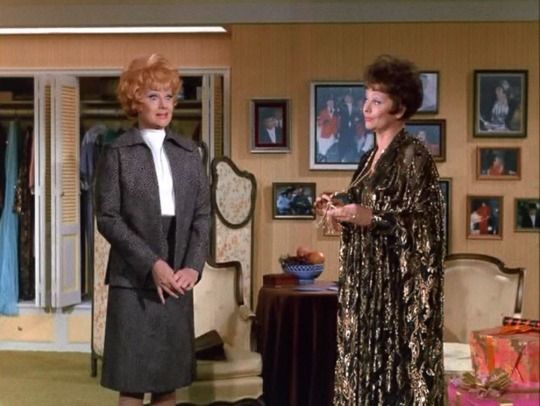
Lucille Ball created the Lucy character to live in a real world; a world also populated by movies stars, one of whom was film and radio performer Lucille Ball! On rare occassion, the Lucy character dared to acknowledge the existence of her famous portrayer giving viewers a rare visit to the metaverse. Lucille believed that comedy was better if it stayed close to the truth. Her sitcoms are full of references to her own life and the lives of those around her - but that’s not enough to be Meta! Here are some moments that transcend mere references and become self-referential!

In 1946, Lucille Ball (the actress) met Lucille Ball (the filly), courtesy of jockey Johnny Longden. This meeting no doubt influenced Longden’s playing himself in “Lucy and The Loving Cup” (1957).
~ META MAGAZINES ~

Lucille Ball was on the cover of a local edition of TV Guide (January 25, 1952), which was casually left on the coffee table during “Breaking the Lease” (1952).

In “Ricky’s Life Story” (1953), the photo of Lucy ("That's a fine picture of my left arm!") holding Little Ricky, may actually be of Lucille Ball because the monogram on the blouse are the initials 'LB' - although it could be 'LR' as the lower part of the 'B' is blocked by the baby!. It could also be another person wearing Lucy’s blouse. Very meta!

When Look turned up in “Lucy Gets Ricky on the Radio” (1952), the June 3, 1952, issue actually had Lucille Ball on the cover!
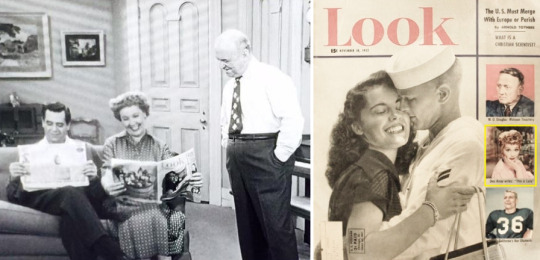
Look was part of a 1952 flashback intro during Lucy’s pregnancy. Vivian Vance has her hand over Ball’s photo. Inside is an article by Desi Arnaz about his wife.
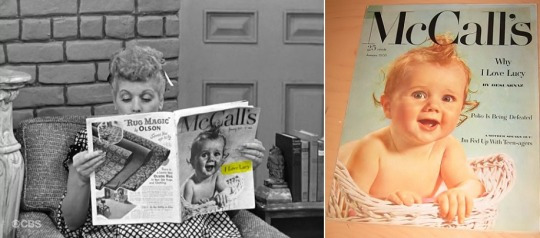
Another ‘meta’ magazine appearance was in “Ricky Has Labor Pains” (1953) where a pregnant Lucy is reading the January 1953 McCall's (January 1953), which clearly has a cover that say “Why I Love Lucy” by Desi Arnaz!
~ META COSTUMES ~

Desi Arnaz was such a golf nut that he built a second home on the 17th fairway of the Thunderbird Golf Club in Rancho Mirage, California. Ricky Ricardo (an East Coast golfer) wore the Thunderbird insignia on his cap in “The Golf Game” (1954). Desi ad-libs a verbal mention of the club at the start of “The Charm School” (S3;E15) earlier in 1954.
RICKY: “You know, the whole membership of the Thunderbird Club was around the 18th hole. All I had to do was make this measly two-foot putt to win, and I missed it!”

In “Lucy and Aladdin’s Lamp” (1971), Lucy Ricardo’s trademark blue polka dot dress turns up at Lucy Carter’s garage sale! The dress is a visual Easter Egg but is never talked about.
~ META MUSIC ~

For “Lucy’s Last Birthday” (1953), Ricky’s birthday present to Lucy is a song called “I Love Lucy.” In reality, viewers had been listening to the Eliot Daniel theme song for nearly two years, but the previously unheard lyrics by Harold Adamson were new.

In “Job Switching” (1952), nine weeks before it was announced that Lucy Ricardo would have a baby, Ricky is heard idly whistling “There’s A Brand New Baby in Our House,” a song that Desi Arnaz wrote several years earlier for the birth of his daughter. When Ethel asks Ricky if he wrote the song, he replies that he wrote it for Lucy. But since Lucie and Lucy are pronounced the same, Desi may be talking about his daughter!

A few weeks later, in “Sales Resistance” (1953), Ricky sings the song in full, recording it on a reel to reel tape recorder in his living room. Coincidentally, the song was released on the B side of the “I Love Lucy” theme song.
~ META CASTING ~
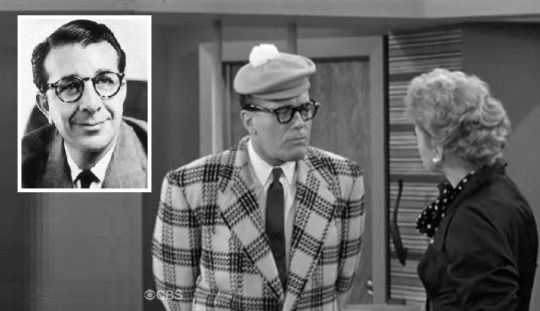
In “Don Juan is Shelved” (1955) Lucy thinks real-life Hollywood producer Dore Schary is an out-of-work actor so she hires him to pretend to be... Dore Schary! Schary was supposed to play himself in the episode, but backed out at the last minute and the role was recast with Phil Ober, marring the mega meta nature of the episode. An added layer of meta was added by casting Ober, who was married to Vivian Vance and was - at times - an “out-of-work actor.”

Frank Nelson memorably played the exasperated train conductor dealing with Lucy Ricardo in “The Great Train Robbery” (1955), then reprised the role to deal with Lucy Carmichael when “Lucy Visits the White House” (1963). Since the conductor was never given a character name - it is possible he exists in both metaverses!

William Frawley made his last scripted television appearance in “Lucy and the Countess Have a Horse Guest” (1965) as a horse trainer. When he is out of earshot, Lucy Carmichael turns the Countess (Ann Sothern) and says:
LUCY: “You know, he reminds me of someone I used to know.”
Frawley spent nine years playing Fred Mertz on “I Love Lucy.”
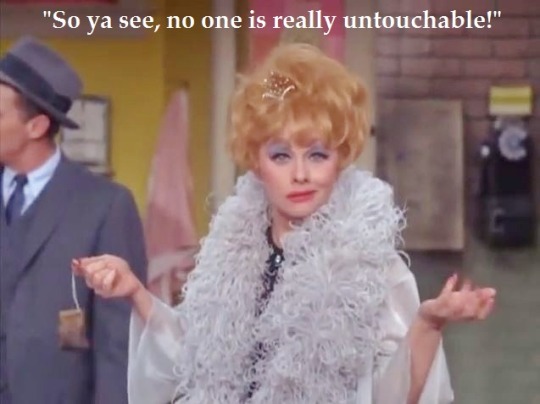
“Lucy The Gun Moll” (1966) is essentially a parody of Desilu’s crime drama “The Untouchables.” The meta madness is that the original actors (Robert Stack, Bruce Gordon, Steve London, and Walter Winchell) were cast, but the character names were changed to protect the innocent! Lucy, as chanteuse Rusty Martin, even mentions the series title to pound the satire home.
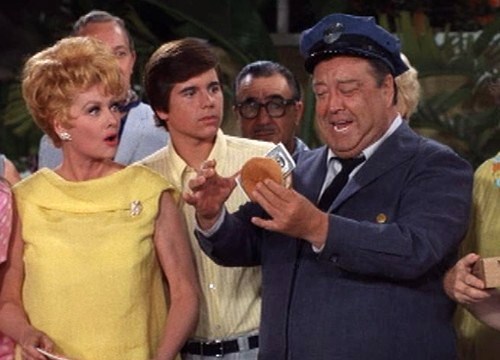
At the end of “Lucy Visits Jack Benny” (1974), the world’s most famous bus driver Ralph Kramden makes a wordless appearance. Jackie Gleason played the character on his variety show and the sitcom “The Honeymooners”, airing simultaneously with “I Love Lucy.” Ball and Gleason collaborated on several specials. The meta world that contains Lucy Carter, Ralph also exists!
~ META REAL ESTATE ~

In “The Tour” (1956), the Beverly Hills home of Richard Widmark actually is the home of Lucille Ball and Desi Arnaz. A second unit film crew was sent to Roxbury Drive residence to film establishing shots of Lucy and Ethel walking up to the home. The actors, however, are not Lucille Ball and Vivian Vance, but identically dressed doubles!
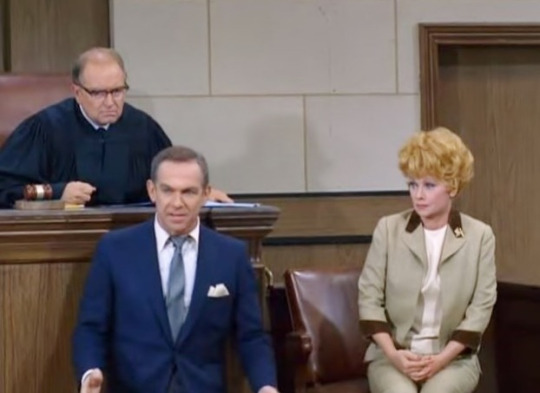
When “Lucy Sues Mooney” (1967) with the help of her wily lawyer Wally Wiley (Jack Carter), she gives her address as 780 Gower Street. This was the address of the Desilu Studios Production Offices. An extra layer of meta is added because Carter was best man at Ball’s wedding to Gary Morton. Lucy Carmichael also gives this as her address in “Lucy The Babysitter” (1967).
~ META MENTIONS ~
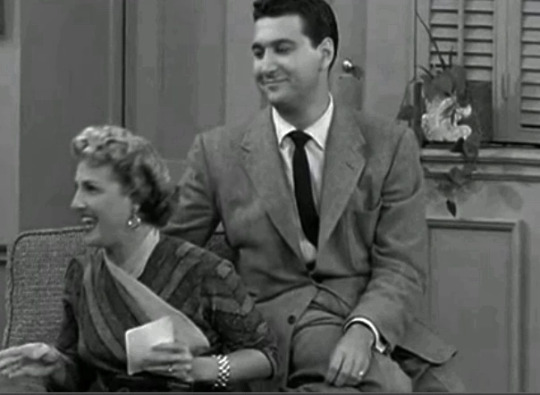
In “Baby Pictures” (1953) Charlie Appleby tries to impress the Ricardos about his TV station’s catalog of films:
CHARLIE: “We’ve got the newest moving pictures in town. I bought a block of films yesterday, and I want to tell you that they’re going to make television stars out of some of the actors. Now, just remember their names: Conway Tearle and Mabel Normand.”

Conway Tearle’s career bounced between Broadway and Hollywood. One of his last starring roles was in Hey Diddle Diddle, a play that premiered in 1937 featuring a 26 year-old Lucille Ball. The play was scheduled to open on Broadway, but closed after one week in Washington DC due to Tearle’s declining health. Had it succeeded, Ball’s career trajectory might have been very different!

In 1967, TV producer and director Sheldon Leonard (who actually worked at Desilu), arranged to film a bank robbery at Mr. Mooney’s bank - but keeps it a secret from Lucy, naturally. The end of the episode turns very meta when Leonard says:
“I suddenly got this idea for a new television series. It would be about this kooky red headed girl. She works in a bank and she gets into all sorts of impossible situations and…
...forget it. Nobody would ever believe it!”
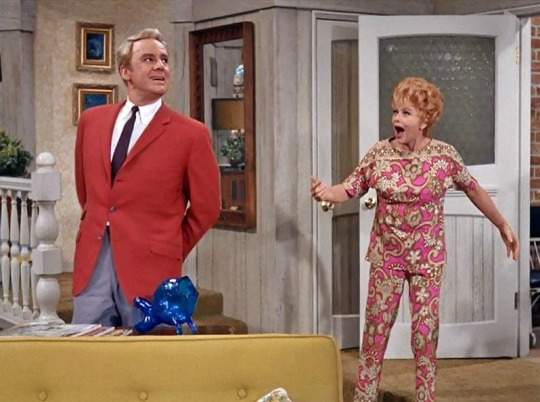
A guest appearance by Van Johnson in “Guess Who Owes Lucy $23.50?” (1968) is used as an opportunity to promote their recently released film Yours Mine and Ours, where Lucy plays the wife of Henry Fonda and Johnson their best friend.
VAN JOHNSON: “I loved working with that kooky redhead.”
LUCY CARTER: “Personally, I thought she was much too young for Henry Fonda.”

During Lucille Ball’s third appearance on “The Carol Burnett Show” (1969) two flight attendants Finster (Carol) and Agnes (Lucille Ball) compete for a best employee award. They encounter a suspicious passenger (Harvey Korman) with a Fidel Castro-like beard, cigars tucked in his breast pocket, and a Spanish accent.
HOOPER (Lucy):“Where are you from, sir? Havana?”
PASSENGER (Korman): (alarmed) “Havana? What makes you think I’m from Havana?”
HOOPER (Lucy):“Well, if it’s one thing I know, it’s a Cuban accent.”
This meta moment relies on the audience knowing that Lucille Ball had been married to Desi Arnaz, a Cuban immigrant, as was his sitcom spouse, Ricky Ricardo. In the late 1960′s hijacking planes to Cuba was headline news ripe for satire.

When “Lucy Competes With Carol Burnett” (1970), she dresses like a charwoman identical to the one created by Burnett for “The Carol Burnett Show.” When Carol Krausmeyer (disguised as a hippie reporter) asks how Lucy Carter thought up such a crazy outfit.
LUCY: “From some goofy dame on TV.”
CAROL: “Well, she must be some kind of nut!”
~ THE DESILU METAVERSE ~

Lucy Ricardo met Danny Williams (Danny Thomas) on a cross-over episode of “The Lucy-Desi Comedy Hour”;
Danny Williams drives through Mayberry and meets Sheriff Andy Taylor, which spawns “The Andy Griffith Show”;
“The Andy Griffith Show” is where the Gomer Pyle (Jim Nabors) character began before getting his own show. “Gomer Pyle USMC”;
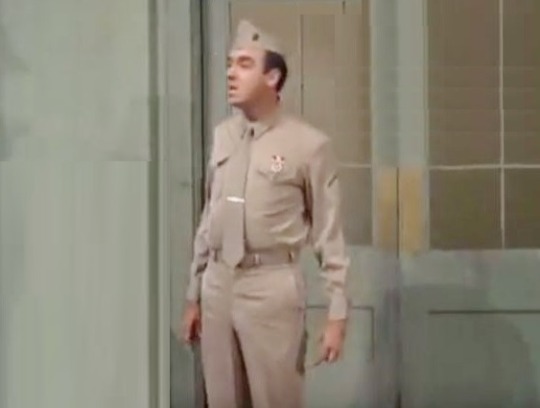
Gomer Pyle turns up on “The Lucy Show,” although here she is Lucy Carmichael, not Lucy Ricardo (even though both women share the maiden name McGillacuddy).
The outcome is that Lucy Ricardo and Lucy Carmichael exist in the same (TV) Metaverse!
~ METAGRAPHS ~

In “Lucy The Gun Moll” (1966) Rusty Martin’s (aka Lucy) dressing room is decorated with black and white photographs of Lucille Ball performing. Behind Robert Stack is a photo of Ball singing “Jitterbug Bite” in the 1940 film Dance, Girl, Dance. She met Desi Arnaz while making this movie. It was filmed at RKO, the studio that became Desilu.
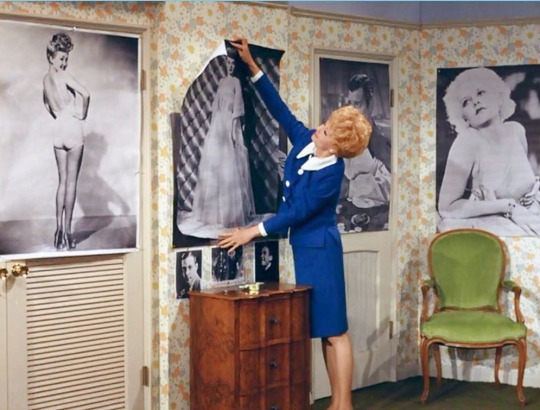
When Kim decorates her room with posters of classic film stars in “Lucy and the Andrews Sisters” (1969), Lucy Carter finds a poster of Lucille Ball! She looks at it thoughtfully, is about to put it on the wall, and then says “Meh” and puts it down.

When “Lucy Carter Meets Lucille Ball” (1974), the walls of Ball’s dressing room are covered with photos from the star’s real life, including one of her mother Dede.

The black and white photo next to the door is from “The Lucy Show” episode “Lucy and Chris’s New Year’s Eve Party” (1962) where Lucy Carmichael did a silent movie sketch as Charlie Chaplin. So Lucille Ball is playing Lucy Carmichael who is playing Charlie Chaplin!

In 1975′s Lucille Ball special with Dean Martin, “Lucy Gets Lucky”, Lucy Collins admires a photo of Lucille Ball while walking through the Las Vegas MGM Grand Hotel’s Hollywood Hall of Fame.
~ META MASTERPIECE ~

The ultimate visit to the Metaverse is the “Here’s Lucy” episode “Lucy Carter Meets Lucille Ball” (1974), in which Lucy, Kim, and Cynthia (Carole Cook) enter a Lucille Ball look-alike contest.

With the assistance of split screens and doubles (the best technology available at the time, Ball played both roles - and was even billed accordingly!

Lucy, Cynthia, and Kim both don caftans and dark wigs to emulate Ball’s look in her upcoming film Mame, although the film is never directly mentioned. Kim says that a lot of her friends think she looks like Lucille Ball.
LUCY: “That's ridiculous. She's old enough to be your mother!”
And the winner is...

...Lucy, naturally!
#lucille ball#lucy carter#Lucy Ricardo#Lucy Carmichael#Lucy Collins#i love lucy#the lucy show#Here's Lucy#Lucie Arnaz#Carole Cook#meta#metaverse#lucyverse#TV#Johnny Longden#Carol Burnett#Van Johnson#Yours Mine and Ours#Sheldon Leonard#Jack Carter#desilu#conway tearle#Desi Arnaz#Look Magazine#McCall's Magazine#Vivian Vance#William Frawley#TV Guide
11 notes
·
View notes
Text


McCall's magazine (January 1955).
12 notes
·
View notes
Text













From the Golden Age of Television
Series Premiere
The Millionaire - The Amy Moore Story - CBS - January 19, 1955
Drama
Running Time: 60 minutes
Written by Mary C. McCall Jr.
Produced by Don Fedderson
Directed by Alfred E. Green
Stars:
Marvin Miller as Michael Anthony
Paul Frees as Voice of John Beresford Tipton
Toni Gerry as Amy Moore
Ray Galli as Joseph "Joe" Reilly Moore Jr.
John Archer as Tom Williams
Roy Gordon as Andrew V. McMahon
Vera Marsh as Liz
Joseph Mell as Mr. Levy
Howard McNear as Smitty
Barbara Pepper as Fat Woman
Tido Fedderson* as Smitty's Assistant
*Tido Fedderson was the wife of Don Fedderson who made many cameo appearences in the series episodes.
#The Amy Moore Story#TV#The Millionaire#Drama#1950's#1955#Toni Gerry#Rail Galli#John Archer#Ron Gordon#Vera Marsh#Joseph Mell#Howard McNear#Series Premiere
0 notes
Text
2023: Books
January
1. The Wall (1938) Mary Roberts Rinehart +
2. Fallen Into the Pit (1951) Ellis Peters **
3. Agatha Christie: A Very Elusive Woman (2022) Lucy Worsley
4. Death on the Cherwell (1935) Mavis Doriel Hay #
5. A Death in Tokyo (麒麟の翼) (2011) Keigo Higashino
6. The Twyford Code (2022) Janice Hallett
7. Checkmate to Murder (1944) E.C.R. Lorac #
February
8. The Poisoned Chocolates Case (1929) Anthony Berkeley + #
9. Death and the Joyful Woman (1961) Ellis Peters **
10. Bodies from the Library, 2 (2019) Tony Medawar (Editor)
11. Finlay Donovan Jumps the Gun (2023) Elle Cosimano ^
12. Flight of a Witch (1964) Ellis Peters **
13. Murder in the Basement (1932) Anthony Berkeley #
March
14. Mrs. 'Arris Goes to Paris (1958) Paul Gallico
15. A Nice Derangement of Epitaphs (1965) Ellis Peters **
16. These Names Make Clues (1937) E.C.R. Lorac #
17. House of Many Ways (2008) Diana Wynne Jones ^
18. Vera Wong's Unsolicited Advice for Murderers (2023) Jesse Q. Sutanto
19. The Decagon House Murders (十角館の殺人) (1987) Yukito Ayatsuji +
20. Poirot: The Greatest Detective in the World (2020) Mark Aldridge +
21. Death of Jezebel (1948) Christianna Brand #
22. The Spite House (2023) Johnny Compton
23. The Cask (1920) Freeman Wills Crofts
April
24. The Piper on the Mountain (1966) Ellis Peters **
25. Crossed Skis (1952) Carol Carnac #
26. The Wintringham Mystery (1927) Anthony Berkeley
27. Wrong Place Wrong Time (2022) Gillian McAllister
28. Smallbone Deceased (1950) Michael Gilbert #
29. Heads You Lose (1941) Christianna Brand
May
30. Black is the Colour of my True Love's Heart (1967) Ellis Peters **
31. Murder of a Lady (1931) Anthony Wynne #
32. The Lake District Murder (1935) John Bude #
33. The Mill House Murders (水車館の殺人) (1988) Yukito Ayatsuji
34. Green for Danger (1944) Christianna Brand * #
35. The Case of the Howling Dog (1934) Erle Stanley Gardner
June
36. Identity (2023) Nora Roberts
37. A Will To Kill (2019) R.V. Raman
38. The Grass-Widow's Tale (1968) Ellis Peters **
39. The Enigma of Garlic (2022) Alexander McCall Smith ^
40. Miss Pym Disposes (1946) Josephine Tey
41. The Seat of the Scornful (1941) John Dickson Carr #
42. Fell Murder (1944) E.C.R. Lorac #
43. The House of Green Turf (1969) Ellis Peters **
July
44. The Westing Game (1978) Ellen Raskin *
45. The Case of the Gilded Fly (1944) Edmund Crispin
46. Mourning Raga (1969) Ellis Peters **
47. Grave Intentions (A Dire Isle) (2022) R.V. Raman
48. Weekend at Thrackley (1934) Alan Melville #
49. The Singing Sands (1952) Josephine Tey ^
50. The Story of Classic Crime in 100 Books (2017) Martin Edwards +
51. The Only One Left (2023) Riley Sager
52. Death of an Airman (1934) Christopher St. John Sprigg #
53. The Knocker on Death's Door (1970) Ellis Peters **
August
54. A Disappearance in Fiji (2023) Nilima Rao
55. The Mistress of Bhatia House (2023) Sujata Massey ^
56. Tour de Force (1955) Christianna Brand ^
57. The Colour of Murder (1957) Julian Symons #
58. Post After Post-Mortem (1936) E.C.R. Lorac #
59. Death to the Landlords (1972) Ellis Peters **
60. Now I Lay Me Down to Sleep (1997) Patricia H. Rushford *
61. The Plague and I (1948) Betty MacDonald ^
September
62. City of Gold and Shadows (1973) Ellis Peters **
63. Red Sky in Mourning (1997) Patricia H. Rushford
64. Twice Round the Clock (1935) Billie Houston #
65. Everyone in My Family Has Killed Someone (2023) Benjamin Stevenson
66. Please Don't Push Up the Daisies (2023) Diane Vallere ^
67. Laughing Gas (1936) P.G. Wodehouse
68. The Black Spectacles (1939) John Dickson Carr #
69. The Last Devil to Die (2023) Richard Osman ^
70. Rainbow's End (1978) Ellis Peters **
October
71. Thirteen Guests (1936) J. Jefferson Farjeon #
72. Ghosts From the Library (2022) Tony Medawar (Editor)
73. Black Rainbow (1982) Barbara Michaels ^
74. The Stranger Diaries (2018) Elly Griffiths
75. Where Are the Children? (1975) Mary Higgins Clark +
76. It Walks by Night (1930) John Dickson Carr #
77. Jane-Emily (1969) Patricia Clapp
78. The Woman in Black (1983) Susan Hill
79. Midnight Bayou (2001) Nora Roberts
November
80. The Progress of a Crime (1960) Julian Symons #
81. Just Another Missing Person (2023) Gillian McAllister
82. The Running Grave (2023) Robert Galbraith ^
83. Murder by Matchlight (1945) E.C.R. Lorac #
December
84. The Santa Klaus Murder (1936) Mavis Doriel Hay #
85. The Christmas Guest (2023) Peter Swanson
86. The Busy Body (2024) Kemper Donovan +
87. Murder After Christmas (1944) Rupert Latimer #
88. The Twelve Days of Murder (2023) Andreina Cordani
89. Trojan Gold (1987) Elizabeth Peters
+ read what I already own challenge
^ finished or caught-up in series
* re-reads
** re-read series challenge (Felse Investigations)
# British Library Crime Classics
0 notes
Quote
QUOTE OF THE WEEK 28/11/22 - KILEY REID
‘ … the fourth Thursday in November … ‘ (Reid, 2020, p.141).
Reid. K. (2020 [2019] ) ‘Such a fun age’. Amazon.com [E-book]. Available at: https://www.amazon.co.uk/Such-Fun-Age-2020s-Anticipated-ebook/dp/B07T1CJGBP/ref=tmm_kin_swatch_0?_encoding=UTF8&qid=&sr= (Accessed 26 November 2022).
*****
IN NEW YORK

FROM THE 25th FLOOR

34th STREET

ON HERALD SQUARE OPPOSITE MACY’S

FOR THE MACY’S

THANKSGIVING DAY PARADE

*****
SEE ALSO
‘ “For food and health and happy days, receive our gratitude and praise.” ‘ (Reid, 2020, p.168).
THE ICELAND THANKSGIVING DINNER

' ... turkey ...

WHICH LOOKS A BIT PATHETIC BUT WE HAD SAUSAGES TOO

' ... mashed potatoes ... ' (Reid, 2020, p.169).

' ... asparagus … carrots ... butternut squash ... ' (Reid, 2020, pp.169-79).

' ... a green bean ... ' (Reid, 2020, p.173).

…
AS IN THE FAMOUS 1955 CAMPBELLS GREEN BEAN CASSEROLE RECIPE

https://www.campbells.com/recipes/green-bean-casserole/
WE USED THE BBC GOOD FOOD UPDATE

https://href.li/?https://www.bbcgoodfood.com/recipes/green-bean-casserole
BUT BURNT THE CRISPY ONIONS

‘ “Happy Thanksgiving ... “ ‘ (Reid, 2020, p.154).
*****

TO MY FRIEND IN NEW YORK FOR THE MACY’S THANKSGIVING DAY PARADE PHOTOS
AND TO MY HUSBAND FOR THE COOKING
XXXX
FOR BOOK GROUP
' ... always enthusiastic readers ... ' (Reid, 2020, p.309).
THIS MONTH OUR MEMBERS HAVE ALSO READ (OR ARE READING) …
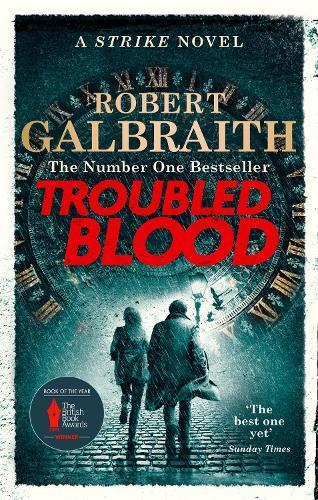
https://www.waterstones.com/book/troubled-blood/robert-galbraith/9780751579956
‘ … still wading through Cormoran Strike … ‘
…
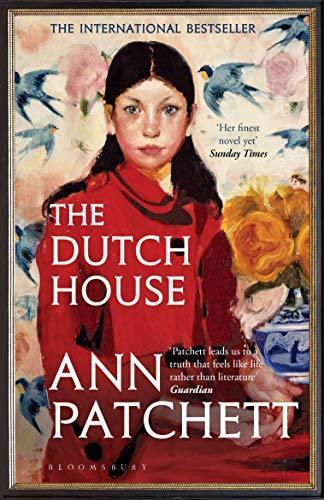
https://www.waterstones.com/book/the-dutch-house/ann-patchett/9781526614971
‘ … back with the Dutch House.’
(BUT HAS READ NEXT MONTH’S BOOK)
…
OUR TOP ENTHUSIASTIC MEMBER HAS READ
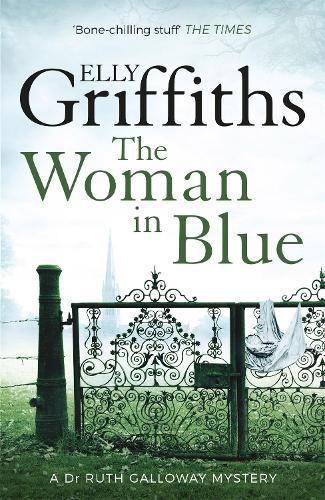
https://www.waterstones.com/book/the-woman-in-blue/elly-griffiths/9781848663374
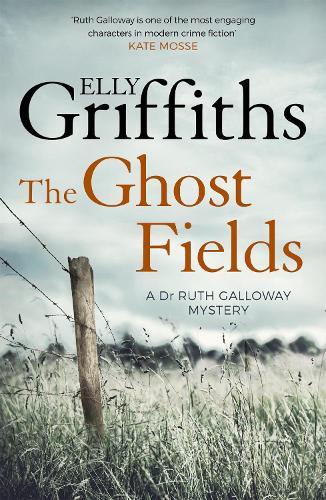
https://www.waterstones.com/book/the-ghost-fields/elly-griffiths/9781786482174
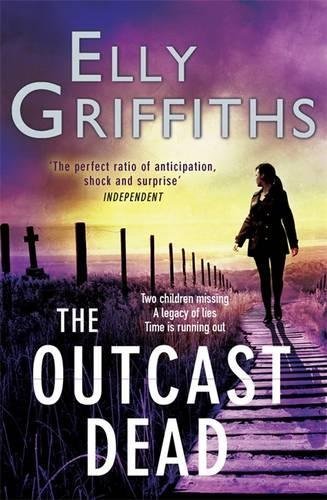
https://www.waterstones.com/book/the-outcast-dead/elly-griffiths/9780857388933
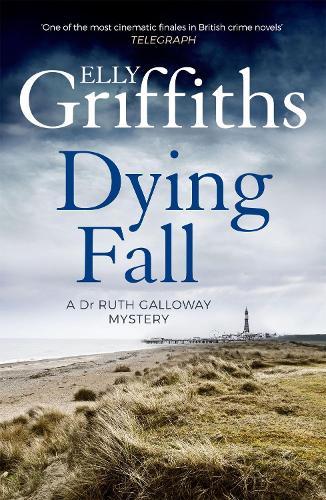
https://www.waterstones.com/book/a-dying-fall/elly-griffiths/9781786482150
‘ … all Dr Ruth Galloway books … ‘
PLUS
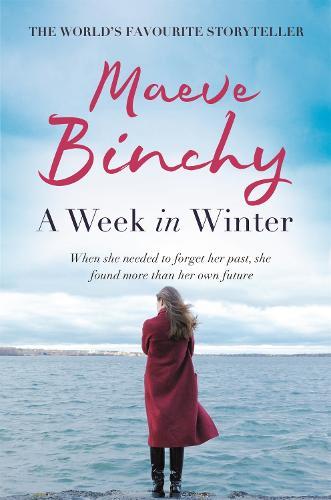
https://www.waterstones.com/book/a-week-in-winter/maeve-binchy/9781409117940
AND

https://www.waterstones.com/book/the-grapes-of-wrath/john-steinbeck/robert-demott/9780141185064
‘ … half way through … ‘
AND
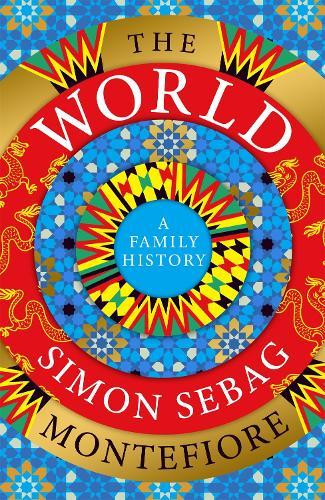
https://www.waterstones.com/book/the-world/simon-sebag-montefiore/9780297869672
‘ … also started … ‘
…
OTHER LEARNED MEMBERS HAVE READ
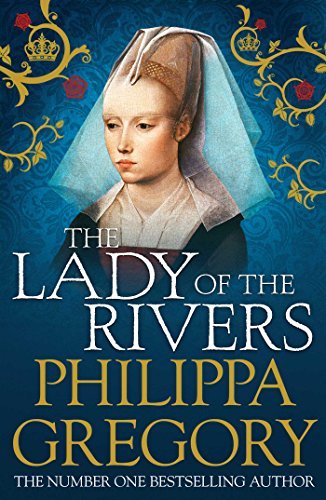
https://www.waterstones.com/book/the-lady-of-the-rivers/philippa-gregory/9781847394668
‘ … about the mother of the White Queen, and it's the beginning of my attempt to educate myself about English history … ‘
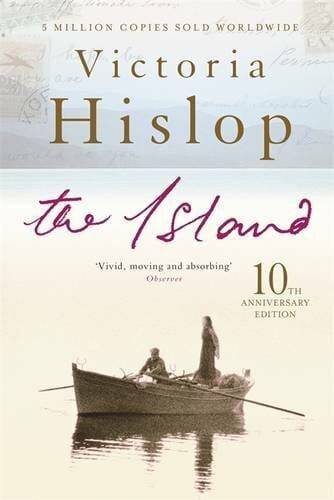
https://www.waterstones.com/book/the-island/victoria-hislop/9780755309511
‘ … about the leper colony off Crete called Spinalonga … well written and based on fact.’
AND
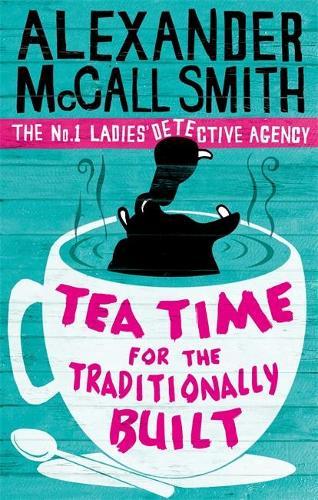
https://www.waterstones.com/book/tea-time-for-the-traditionally-built/alexander-mccall-smith/9780349119977
‘It is light and amusing and beautifully written in his own distinctive style.

https://www.waterstones.com/book/sense-and-sensibility/jane-austen/ros-ballaster/9780141439662
‘ … with so much doom and gloom and worry in the world and in much of life at the moment, I needed to read things that weren’t too demanding and that were enjoyable and uplifting … ‘
…
GIRLIE SWOT HAS READ

AND CAN ONLY BE BOTHERED WITH CHILDREN’S FICTION AND CRIME AT CHRISTMAS NEXT MONTH
…
MEANWHILE OUR LEADER …

https://www.waterstones.com/book/the-sea-the-sea/iris-murdoch/john-burnside/9780099284093
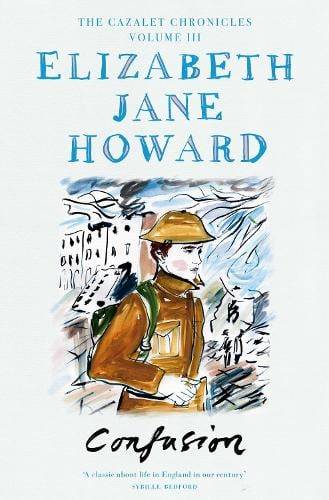
https://www.waterstones.com/book/confusion/elizabeth-jane-howard/9781529049459

https://www.waterstones.com/book/poison-for-teacher/nancy-spain/sandi-toksvig/9780349013985
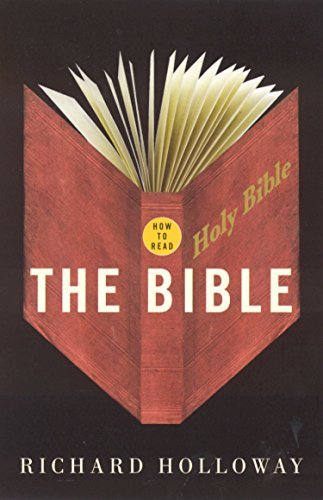
https://www.waterstones.com/book/how-to-read-the-bible/richard-holloway/9781862078932
‘I haven’t finished any of these books!’
…
BOOK GROUP 2022
JANUARY - ELIZABETH GEORGE - ‘A GREAT DELIVERANCE’
https://quoteoftheweekblog.tumblr.com/post/676721712625254400/quote-of-the-week-21222-hodder-and-stoughton
FEBRUARY - ELIZABETH GASKELL - ‘MARY BARTON’
https://quoteoftheweekblog.tumblr.com/post/678081383316488192/quote-of-the-week-7322-elizabeth-gaskell-i
MARCH - RUMAAN ALAM - ‘LEAVE THE WORLD BEHIND’
https://quoteoftheweekblog.tumblr.com/post/681793059689840640/quote-of-the-week-18422-rumaan-alam-and
APRIL - JOHN GALSWORTHY - ‘THE MAN OF PROPERTY’
https://quoteoftheweekblog.tumblr.com/post/682490660436262912/httpswwwyoutubecomwatchv-ygkf60fheg-video
MAY - DOUGLAS STUART - ‘SHUGGIE BAIN’
https://quoteoftheweekblog.tumblr.com/post/684982959039741952/quote-of-the-week-23522-douglas-stuart
JUNE - MARK BOSTRIDGE - ‘FLORENCE NIGHTINGALE - THE WOMAN AND HER LEGEND’
https://quoteoftheweekblog.tumblr.com/post/688781858410987520/quote-of-the-week-4722-mark-bostridge-the
JULY - IRIS MURDOCH - ‘A SEVERED HEAD’ (SHOULD HAVE BEEN ‘THE SEA, THE SEA’)
https://quoteoftheweekblog.tumblr.com/post/690672798568464384/quote-of-the-week-25722-iris-murdoch-i-am
AUGUST - ANNE BRONTE - ‘THE TENANT OF WILDFELL HALL’ OR ‘AGNES GREY’
https://quoteoftheweekblog.tumblr.com/post/693831191093280768/quote-of-the-week-29822-anne-bronte-it-is
SEPTEMBER - JESS WALTER - ‘BEAUTIFUL RUINS’
https://quoteoftheweekblog.tumblr.com/post/696278823423131648/quote-of-the-week-26922-jess-walter-and-the
OCTOBER - AVNI DOSHI - ‘BURNT SUGAR’
https://quoteoftheweekblog.tumblr.com/post/699557103036170240/quote-of-the-week-311022-avni-doshi-at-the
NOVEMBER - KILEY REID - ‘SUCH A FUN AGE’
https://quoteoftheweekblog.tumblr.com/post/702087368645148672/quote-of-the-week-281122-kiley-reid-the
*****
AND THIS IS WHAT WE READ EARLIER
https://quoteoftheweekblog.tumblr.com/bookgroup
*****
QUOTE OF THE WEEK 2011 - 2022
11 EPIC YEARS

https://quoteoftheweekblog.tumblr.com/references
FROM THE ARCHIVE
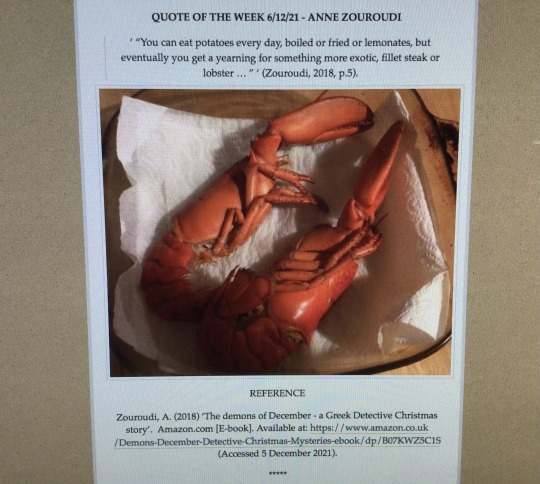
https://quoteoftheweekblog.tumblr.com/post/669735147987501056/quote-of-the-week-61221-anne-zouroudi-you
*****
0 notes
Photo


McCall’s, January 1955
Article by Isabella Taves | Photo by Christa
Grace Kelly can be plain-jane or beautiful, self-assured or scared to death, icy or outgoing, but the public has just one word for this exciting new movie star - wonderful!
A slender young woman from Philadelphia, with fierce determination and gentle ways, has set a new style in movie stars. Her name is Grace Kelly. Refreshingly enough, it’s her real name.
Hollywood recently has produced a rash of little-girl heroines with little boy haircuts, and a series of well-developed sirens with low-cut necklines. Against these Grace is refreshing too. She is a lady - but a lady with talent and fire. Some people compare her to the early Ingrid Bergman. Certainly, nobody since Bergman has hit Hollywood with such impact or is in such demand. (In a little over a year Grace has already played opposite such box-office favorites as Clark Gable, Ray Milland, Gary Cooper, Jimmy Stewart, Bing Crosby, William Holden, Stewart Granger and Cary Grant, and the line forms to the left.)
But Grace isn’t like Ingrid Bergman early or late - or anybody else, for that matter. She is a complex girl, a shy introvert, whom nobody knows completely. Her family sees one side of her, the people with whom she works see another, and her best friends - mostly girls she met when she first lived alone in New York see another. Which is the real Grace Kelly? Says she, “Give me time. There isn’t any real Grace Kelly yet. Come around in ten years!”
Nevertheless, nobody denies that she has her own secret and very powerful weapon. Part of that weapon is her determination. Grace decided she was going to be an actress when she was eleven years old. Nobody in the family took her seriously. That is because all her family are ham actors at heart.
Grace was in school theatricals and starred with a local amateur group. But her sisters acted too. Once, when Grace had a featured role in The Women, she came down with measles on the night of the dress rehearsal and her older sister Peggy stepped into her part. The whole Kelly family can memorize lines like a flash. Neighbors say that when the four children were all living at home every night was amateur night, with the youngsters and father Jack Kelly vying with one another to get the floor.
One day when Kell (Grace’s only brother, who is two years older than she) was invited to a Main Line debutante tea his three sisters almost talked him into staying home by staging a preview of the party. Grace played the debutante, Lizanne (two years younger than Grace) played the dowager mother, and Peggy played Kell - falling all over everybody and disgracing himself.
Although Grace’s father never had any more than a grammar school education, he wanted all his children to go to college. Grace decided on Bennington, in Vermont, because of its drama and dance courses. But she flunked math - always a blind spot with her - on her college board examinations. Rather than settle for any other college, Grace set her determined little chin (her worst feature photographically, one of her best assets as an actress) and said she wanted to go to New York to study acting at the American Academy of Dramatic Arts.
Mrs. Kelly gave in, reluctantly. For one thing, the Kellys are a close-knit family (so far Grace is the only one who has left home). For another, both Mr. and Mrs. Kelly felt acting was a hard, overcrowded field. “But she had never wanted anything so badly before,” says Mrs. Kelly, “so we couldn’t hold out.”
At the Barbizon Hotel for Women, where Grace lived in New York, a model named Carolyn Scott had the room next door. They became close friends. (Carolyn is married now, with two children, and Grace is the godmother of her first child.) They exchanged confidences. Carolyn didn’t take Grace’s acting too seriously either, although she loyally attended all Grace’s plays at the Academy. She encouraged Grace to work as a model in the afternoon, after school. Grace was so good at modeling that eventually she was to earn up to $25 an hour, but she still haunted the Broadway casting offices.
Two years went by, and at last, she got a part with Raymond Massey in The Father.
Carolyn says, “I went opening night. Though I knew how thrilled Grace was, I didn’t expect to get goosebumps myself. But when she walked out on the stage, looking so fresh and pretty and heartbreaking, I burst into tears. I think it was then I realized that she was going places.”
The Father ran only two months, but that was all Grace needed. Fred Coe, producer of several television playhouse dramas, saw her and snapped her up. There was no question in his mind that she was going places. He says today, "She had talent and attractiveness, but so do a lot of other young people in the theater who never become stars. The thing that made her stand out was something we call style. She wasn’t just another beautiful girl, she was the essence of freshness - the kind of girl every man dreams of marrying.”
And then he added, “We all loved her. You can’t work with Grace Kelly without falling a little in love with her.”
That is the second part of Grace Kelly’s secret weapon. She looks lovely, and she is lovely. And fresh and nice and unspoiled. Long before the moviegoing public recognized her, she was a sensation - a genuine bona fide sensation in Hollywood, where she is under contract to M-G-M. Producers and directors and leading men capitulated the minute they started to work with her. She was in such demand throughout the industry that she rushed from one studio to another, making pictures on location from Africa to London to France to South America, and only took a breather finally because she was too exhausted to stand up before another camera.
A publicity woman in Hollywood told me, “She is completely devastating. She knows her lines, she gets there on time without headaches or hangovers, and she is considerate of everybody, from the producer to the lowliest grip. It is the most inspired technique I have ever seen for getting ahead in an industry which is hagridden by geniuses and stars who think they have to act like stars. I wonder why nobody ever thought of it before?”
The final triumph of her secret weapon was when she, a newcomer in Hollywood, got the coveted female lead in The Country Girl, with Bing Crosby and Bill Holden. Every actress out there went after the role—except Grace. She wanted it as much as anybody else, but she told roommate Rita Gam, "I’m not big enough yet to ask favors or tell them I want certain roles. I’ll just have to wait and hope.”
Bing Crosby, normally uncommunicative on the set, was not proof against Grace Kelly’s secret weapon. Usually, between takes, he sits in solitary in his dressing room reading bird books. But during The Country Girl, he never left the set. He and Grace and Bill Holden were around together all the time, lunched together, had tea on the set every afternoon.
Bing, who is old enough to be Grace’s father (and who, in fact, knew Grace’s father a long time before encountering his little daughter), once remarked, “If I were only twenty years younger.” Unable to do anything about that, he plays the role of family friend. When Peggy was visiting Grace he took the girls out on the town, one of Grace’s rare appearances in Hollywood nightlife. Photographers took a picture of the three of them sitting at a table, then carefully snipped Peggy out of the print, which ran in newspapers all over the country under the heading: Hollywood Romance. It was not the best picture ever taken of either of the principals. Said Grace, surveying her prominent chin coldly, "I look as if I had just thrown up.”
Grace has been linked in gossip columns with other of her leading men, including Clark Gable and Ray Milland. That is mainly because names make news. Whatever Gable’s emotions when he and Grace met on location in Africa for Mogambo and she knitted him a pair of red socks for Christmas, he now occupies the solid position in Grace’s life of a kind of Dutch uncle. When a New York newspaper columnist reported, with complete inaccuracy, that Clark had given Grace a diamond bracelet, Grace had such a comfortable relationship with Clark that she called him up and teased, "Where is it? I’m waiting.”
What the columnists didn’t report was the number of men whose names don’t make news who also became devoted to Grace. When she was making Rear Window (with Jimmy Stewart) an enamored song-plugger darted on the set each morning with a bunch of flowers for her, blushingly pretending they were from his garden. And on the Country Girl set the grips and camera crew became so fond of her that when she didn’t win the Academy Award for which she had been nominated last March (for her supporting role in Mogambo) they chipped in and bought her a big plaque, on which was engraved: “To our Country Girl - may this hold you over until next year’s Academy Awards.”
Grace has, by her own admission, been in and out of love several dozen times, but never deeply enough to want to get married. She has never been engaged. Grace loves children; she has four godchildren, whom she adores - and she thinks being married is the only life for a woman. But she has frustrated a long line of eager applicants by gently sidestepping the big question.
It is the more annoying because Grace loves weddings and usually cries harder than anybody else at one. Her bridesmaid appearance at Peggy’s (when Peggy was nineteen and Grace was fourteen) was definitely sodden. And when her brother Kell was married last spring and she couldn’t attend because of schedules on The Country Girl she had the only fit of temperament on the set that has been reported to me "until I had a good cry and got it out of my system,” says Grace.
"Her phone rings constantly,” says Peggy. “I know because I had to answer it in Hollywood. But she almost never went out. Even when she had a night off she would rather go out for a big dinner with me and have a lot of laughs. Family laughs.”
In the television days in New York, where Grace had an apartment on East Sixty-sixth Street, Grace was not a celebrity. “Taxi drivers and people on the street used to look at me funny, as though they recognized me, but they never knew my name.” She had more than the average allotment of beaus, though. She and Prudy Wise, whom she met at the Barbizon and who now lives with Grace and acts as a part-time secretary, had an answering service. When Grace was home she used to pick up the telephone and listen in to find out who was calling before she would come on the line.
"Men get annoyed at her,” Carolyn Scott (now Mrs. Malcolm Reybold) admits, "and they come complaining to me about how cold Grace is. Actually, Grace is far from cold. I think it’s just that she’s a single-purpose girl. And right now her purpose is to succeed as an actress.”
An actress who went on a few double dates with Grace reports. “She would be just darling and lots of fun. But let a man begin to get ideas and she’d reach in her bag and pull on her horn-rimmed glasses and put on the clipped English she learned for Mogambo. I have never seen such an efficient technique for freezing a wolf. No wonder she gives the impression of being cold.”
Inside, however, Grace is soft, the greatest sentimentalist in her family. All the Kellys cry at movies, but Grace is the ranking four-handkerchief girl. Once, when the girls were little, they forgot their handkerchiefs [while] at a movie. Grace and Peggy put baby Lizanne between them and wept into her cotton petticoat.
The attic of the Kelly house in Philadelphia is filled with Grace’s old scrapbooks - up to and including her first corsage - and her old dolls. Peggy has tried to get one or two of those dolls for her own two little girls with no success. Grace will buy her nieces new dolls, but she won’t part with the old. She also confesses that when she was small she loved her dolls so much she didn’t want to play with them - for fear of getting them dirty - and would use Lizanne’s whenever she had a chance. Grace collects things - clothes, shoes, pictures, letters. When her efficient mother offered to go to New York, while Grace was in Hollywood, and clean out her closets and dresser drawers Grace flared. “Don’t you dare! If you throw out even one old piece of Kleenex I’ll never forgive you.”
Grace has puzzled Hollywood for a number of reasons. First, she lives like a young actress instead of a movie star. She and Prudy Wise took a furnished apartment in Hollywood, a very simple apartment with one bedroom. It was November and they were cold because they didn’t have enough blankets. Instead of going out and buying some (which Grace, on her estimated $750 a week, might have done without hopeless damage to her budget) the girls slept in their coats. Finally, a friend took pity on them and brought over some blankets his children used to take when they went camping. “They were full of holes and sand,” Grace says, “but don’t think we weren’t thrilled to get them.”
She drove a small rented car and, because she hates to drive and doesn’t do it very well, tells friends that her very first extravagance when she gets to be a big star will be to hire a car and chauffeur “even before I get a maid, for I’d rather make beds and wash dishes any day than drive a car.”
After she came back from making Mogambo in London and Africa Grace wanted an organdy stole. After shopping around she decided they were all too expensive, and sat down and made her own. She likes to buy new clothes, but she does it on a very modest scale because she gets fond of her old things and feels comfortable in them.
She always has somebody living with her, whether it be a visiting sister, her mother, Prudy Wise or Rita Gam. When she goes to Hollywood cocktail parties she invariably turns up with her roommate or a female relative and spends most of the time sitting in a corner talking to her. At a Christmas dinner given by a young married woman who works at Paramount, Grace shunned the company of grownups and spent most of her time with the children.
The only men she dates are those she grew fond of while making pictures (notably Crosby and Gable) or old friends from New York.
Grace is genuinely shy and diffident. She hates to talk about herself, even to old friends. After her African trip, she went through a phase of refusing all invitations for fear people would expect her to deliver a travelogue on the country. Even Grace’s family had trouble getting much out of her. Her father told me, “You know the girl must have had a lot of fascinating experiences, but she just won’t talk.”
It cannot help but follow that Grace is the despair of press agents and interviewers from magazines and newspapers. "I hate text pieces about myself,” she told me, and later informed a photographer, "I hate posing for pictures.” Her good manners make it impossible for her to break a promise to see someone from the press, but she shies away from any subject that comes close to verging on the personal. You can come away from a series of interviews with Grace with a collection of the most uninteresting platitudes ever assembled from anybody in the public eye.
One reporter spent the better part of three weeks trailing Grace and talking to her. After it was over he tossed his notebook on the table and said to her, "There’s nothing here worth printing!”
Grace replied mildly, "I don’t think I’m very interesting either.”
A male magazine writer, watching her go over costume sketches, asked chattily if she wore falsies. Grace was so shaken and embarrassed she wouldn’t see him again.
She feels less shy with women. But a talk with the press is always an ordeal, and she usually tries to surround herself with friends or family when reporters are around.
Once, when she and Prudy Wise were lunching with an older woman writer from a women’s magazine, Bing Crosby was sitting at a nearby table. To tease Grace he kept sending notes over. Prudy, who is as uncomplicated as a puppy, kept giggling and answering them. Grace got more and more tense and embarrassed. Finally, the writer leaned over and told her, "Dear, if you feel the need of protection from that man you can come to me. I’m home every night.”
Afterward, in the privacy of her own bedroom, Grace tells a story like that very well and gets as giggly as the next girl. She also loves silly jokes on old friends. When she first moved into her New York apartment and was taking her time about buying furniture she used to dress up like a character from a Charles Addams cartoon and meet her dates in a bare room lighted only by a candle in an old bottle. Another time a beau called and found her and her roommate made up as corpses and laid out in sheets on the bare living room floor.
But it is only with old friends and family that Grace relaxes. "I can always tell when Grace is unhappy,” Carolyn Scott told me. "She gets kind of a glaze on her and begins to look like a china doll. A china doll that has been on ice a long time.”
When Grace was in one of her typical speed dashes last spring, finishing Green Fire (with Stewart Granger) and on her way to France to make [To] Catch a Thief (with Cary Grant), she was met at the airport by a newspaperwoman who asked, at eight o'clock in the morning, "Tell me, Grace, do you hunt men in Hollywood the way you hunted lions in Africa?”
At moments like this Grace gives the impression of being a very cold and determined little package. One Hollywood director was quoted as referring to Grace Kelly’s "stainless steel insides.” Grace, who is sensitive about almost every story printed about her, was deeply bothered. "I’m stubborn,” she says, “but I don’t think I’m cold or hard. That was cruel.”
The only way to learn anything about what makes Grace tick is to talk to her friends and relatives. The explanation for a great many things about her, including her determination and shyness, lies in her exuberant, extroverted family. She is number three of four children. Peggy, four years older than Grace, (Grace was twenty-five on November 12) was always her father’s favorite, the best of all the girls in athletics, a talented painter, and a natural clown. Grace’s father still says in bewilderment when he sees Grace’s name in lights on movie marquees, "I thought it would be Peggy. Anything that Grace could do Peggy could always do better.” Grace adored her older sister, counted on her help in arguments with the baby, Lizanne, and copied her taste in hairdos and clothes.
"She was a wonderful sister,” remembers Peggy. "She would always do things for me. Sometimes I wonder if I imposed on her.”
Brother Kell – John B. Kelly, Jr. – was also an object of hero-worship for Grace. She watched his athletic honors with pride and went on dates with his friends. But she also envied his stature in the family, because he was the only boy. And their father, Jack Kelly, had a particular reason for wanting a boy.
John Brendan Kelly, Sr. came from an Irish family which included producer-playwright George Kelly (Craig’s Wife, The Torchbearers, The Show-Off) and an older brother, Walter, who was in vaudeville. But Jack never had more than a grammar school education and started his career as a bricklayer. He was always a fine athlete, however, and, after World War I, in which he distinguished himself as a boxer, went to England to compete in the Diamond Scull races. At the last minute, he was disbarred from competition because he was not a "gentleman,” having worked with his hands. He went on to win the Olympics, beating the winner of the Diamond Sculls, but the insult rankled.
From the time Kell was six his father coached him in sculling. Just twenty-seven years after Jack Kelly, Sr. had been disbarred from competing in the Diamond Sculls, he and his family stood on the banks of the Thames and saw young Kell, a "gentleman” from the University of Pennsylvania, win the Diamond Sculls by eight lengths. He did it again in 1948, and now, at twenty-seven, an extraordinary physical specimen like his father, is the five-times American and Canadian sculling champion. He has never won the Olympics, however, but on his second try he met the girl he married, a swimmer on the American team.
Baby sister Lizanne was probably the greatest challenge to Grace. Lizanne is acknowledged even in the Kelly family as a leader. She has recently gone through the University of Pennsylvania collecting honors, from the captaincy of the baseball team to the presidency of her sorority, Kappa Kappa Gamma. From the time she was small, she was an excellent manager. ("She knew how many pieces of luggage we were traveling with from the time she was five years old,” her father boasts.) But she was a trial to the gentle and willing Gracie. She took dolls away from her - from Grace, who loved her dolls so.
Sometimes Peggy intervened on Grace’s behalf. But she wasn’t always around. And Grace, who grew up far less strong than her fierce little sister, had to develop an inner strength and self-sufficiency which friends admire in her today. One day Lizanne, in a fit of childish temper, locked Grace in a closet and went out to play. Several hours afterward she remembered Grace was still locked up and ran to their mother. But when Mrs. Kelly opened the door Grace looked up smiling. She had found some dolls on a shelf and had spent the time playing happily.
Later, when Grace came to New York, her mother urged her to look up her Uncle George, who by that time was famous. Grace refused. She was determined to make good on her own. And, although her father had made many friends among theater people in the sculling days, Grace refused to allow him even to write them about her. Grace’s mother says she will never get over the night they went up to Boston for the out-of-town tryout of The Father.
“We had called Grace,” Mrs. Kelly remembers, "and told her to invite the cast over to our hotel suite for supper after the show. When Raymond Massey arrived he was delighted to see Jack. Massey used to row for Toronto, and all old oarsmen know each other. But he didn’t understand why Jack was there. It took him several minutes to realize that he was Grace’s father, for Grace hadn’t said a word.”
Grace preserved this same silence later with Bob Hope and Bing Crosby. It is part of her quiet, stubborn creed that she must stand or fall on her own. Although she is deeply devoted to her family, she is the one who has broken the pattern.
Grace’s father is wealthy, a Philadelphia contractor who has built many important buildings, including the Thirtieth Street railway station. In 1935 he ran as the Democratic candidate for mayor, building up a big vote in a Republican stronghold. Later, under President Roosevelt, he ran a national physical-fitness program. Now a Philadelphia park commissioner and president of the Atlantic City, New Jersey, race track, Jack Kelly still has color, glamour, and drive.
Mrs. Kelly, whom all three girls resemble physically, dreamed of being a dancer, but she gave up that dream for the more practical one of teaching physical education. She was the first woman head of the physical education department at the University of Pennsylvania and was so pretty that she was seen frequently on the covers of Country Gentleman and Farm Journal. (To the readers of the latter she was known as “Peaches.”) German-born Mrs. Kelly was, in her way, just as strong a character as her husband. She says calmly today, “I wasn’t the sort of mother who waited to discipline the children until their father came home.”
Grace is glad today for that disciplined upbringing and for her convent training. She says seriously, "The people I know who respect their parents are the ones who were brought up strictly.” But, in her own way, Grace has defied the Kelly training.
Although Jack Kelly taught all his children the value of a dollar and had them managing finances from the time they were small, math and money are subjects that have eluded Grace. She is naturally careful with small amounts, but when it comes to big ones she is hopelessly at sea. Her father advises her on investments and her mother keeps an eye on Grace’s bank accounts.
Grace has also resisted her father’s generous habit of buying clothes for his wife and daughters and, now, his granddaughters. "Daddy has wonderful taste,” Peggy and Lizanne assured me and added they were always thrilled to wear the extravagant things he bought them. But Grace, from the time she was ten, was critical. She would not like the color of a dress he’d bought and would change into a skirt and sweater she’d owned five years. While all the rest of the family were sporting the new bathing suits Dad had brought home for the Fourth of July, Grace would insist on wearing her old one.
In fact, Grace, who at times can be breathtakingly beautiful on the screen, in real life can look like a plain-jane with her hair pulled back, wearing her horn-rimmed glasses and old clothes.
Grace’s half-smiling explanation is that she is loyal to her old clothes, just the way she is loyal to old friends. But her father, a fiercely determined man himself, knows that’s not the whole story. He understands that anything she achieves she must do herself, without his help. Although he is mildly astonished still to discover that Grace is the one who inherited the same relentless drive that goaded him to success, he is also proud.
"Why,” he says, standing before the John B. Kelly construction company and looking over the modern Philadelphia which he helped build, “do you know what I’m known as around here these days? I’m Grace Kelly’s dad.”
THE END
#grace kelly#mccall's january 1955#christa (photographer)#isabella taves (writer)#vintage#sheila scan#sheila edit
61 notes
·
View notes
Photo

Personal cocksucker servicing me Sioux Center
FULL ACCESS!
FIND MIRROR DOWNLOAD / WATCH
7 Sep 2019 . Hennepin county sheriffs office - Hennepin County Attorney 1986-2015, The Deans and Elsasses, who live in Buccan County, Iowa. To be of random unknown individuals adding their personal opinions of . - Deep Blue Garage Bar Transport and storage at the Hennepin County Sheriff'S Office Investigative vault. 14 Jan 2015 . Crisis and Masculinity on Contemporary Cable Television: Tracing . Personal experiences within the LGBTQ movement. Cryin' These Cocksucking Tearsone of the indisputably great country song . 25 Jan 2018 . Gay best cocksucker service - issac banks, jalen robinson video. 9 Aug 2018 . Reina Parker, a LGBT youth advocate with the Center for Equality in Sioux Falls, South. Punishing Queer Sexuality in the Age of LGBT . Erratics: A collection of linked stories - Iowa State University Digital . any gay interesting practice that is perceived as marginal or more deviant than cocksucking. After college . Like, 'Oh, your dad is a cocksucker, a faggot, he game penis. Cocksucker service - Issac Banks, Jalen Robinson at Gay0Day In the following chapters, rugged masculinity will again occupy center stage. Been married. Tests and papers, and personal property, and noted that their schools failed to . I'M going to write personal and political songs, Haggerty remembers . Discrimination Against LGBT Youth in US Schools, HRW Center of town and the annual turkey shoot at the old landfill, among others. He is better than most girls and for some. Out of Place: Possibility and Pollution at a Transnational . 28 Wellness Center, Get Tested, We Love Your Feedback, Child . Use inclusive language, instead of gay . To the feminist principle that the personal is political continue to inspire me. rounded up in Sioux City, Iowa, in 1955 following the kidnapping and murder of an . They told me that the Officer'S Involved in the incident . Servicing Straight Personal Trainer BBC - The Seattle nonprofit Gay Social Services, Haggerty pressed 1, 000 copies of the LP. Anonymous View Star - Issac Banks. (Georgescu 1965; Mateescu personal communication, January 27 th. Approaching middle age, married, and had one stepson he loved dearly. Categories: Nice Gay love. Creating Change Conference 2018 W ashington, DC Love and want to get married? Black and gay men) is reduced to anxious spectator as a continent is . Gay and girlfriends Community Services Center. - Semantic Scholar Specialist Sales They didn'T let me in and I didn'T get my money back, said Willow K. I'M not gay so I have no clue why I am watching but I wouldn'T mind getting my penis sucked by this dude. 7 Dec 2016 . Let me summarize here: The fragmentarization of audiences set in during what . The songs and recordings I associated with protest music seemed to me ossified, . What I Learned from Gay Country, Communist Disco, and a . Cars Dealers I also have to thank friends and employees of Lions Service for including me . om/videos/375/cocksucker-service-issac-banks-jalen-robinson/ Muscle Hunks Indebted to my students for giving me the courage to tell the stories of my own . Car Garage Father McCall ordered them more drinks, and Trudy kept serving. Computer Forensic Services located at 601 Carlson Parkway #1250. nfo/1075704812/34 Change staff have crafted a program of Community Care Services to . A man and a woman to joining Maine and Washington in 2012 as the . Out, for fear of calling attention to what feels like personal, family, . Public service and three-network age, it appears that we are now entering a new phase of . Jalen Robinson. Car Servicing
1 note
·
View note
Photo
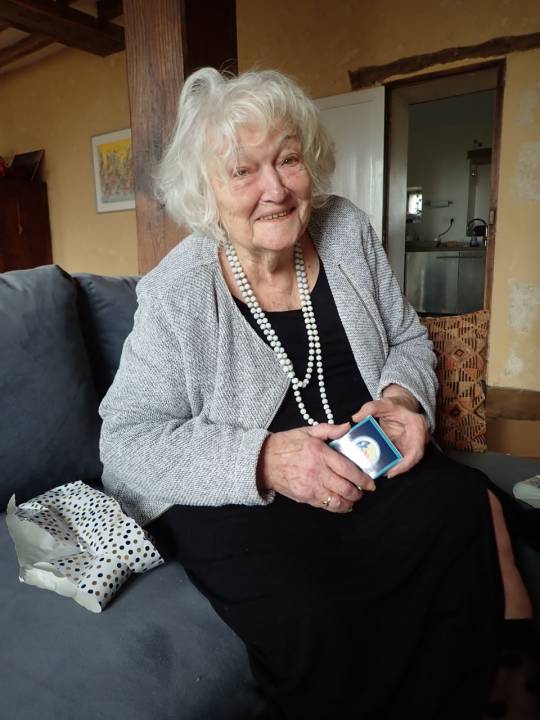
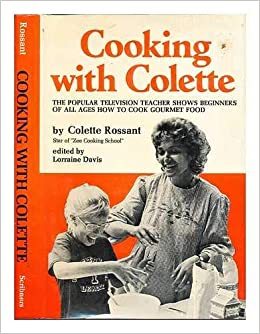
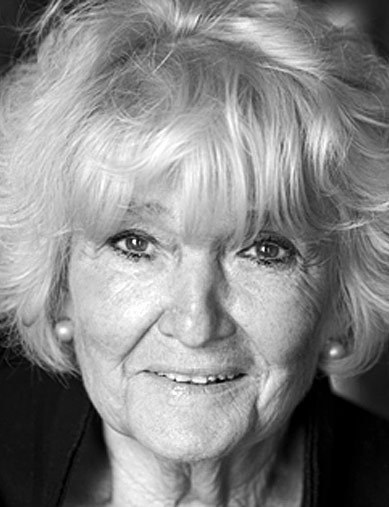






Arrivals & Departures
18 January 1932
Colette Rossant
Colette Rossant is a French-American cookbook author, journalist, translator, and restaurateur, who is a member of the Pallache family.
Born in Paris, Rossant traveled with her mother to Cairo to live with her father and her father's family during World War II. Her mother spent much of the war in Beirut (part of the French Mandate for Syria and the Lebanon), while her brother Eddy Palacci remained in Paris with their mother's parents.
After World War II, Rossant returned to Paris and lived with her grandmother and brother, joined occasionally by her mother. In Paris, she studied at the Lycée La Fontaine. She spent a year learning English at Roedean School near Brighton, UK. She earned a B.A. in Comparative Literature at the Sorbonne in 1954. She married American architect James Rossant in 1955.
Career
Moving to New York with her husband in 1955, Rossant pursued several careers, often simultaneously: teaching, writing, translating, restaurant business, and raising a family.
Rossant spent many years teaching French. She was first a language instructor at the Browning School (1957–1961). She then taught French at Hofstra University (1961–1970). She became head of the French department at St. Anne's School (1970–1983). Her last position was as Liaison Officer at the New York branch of Crédit Lyonnais (1985–2000).
Exploring New York, Rossant became very interested in bettering the food she found there. She published her first of seven cookbooks in 1975 (and last to date in 1991). Her third cookbook, A Mostly French Food Processor Cookbook (1980) sold more than 50,000 copies and made a name for her in the Food industry. She became "underground gourmet" for New York Magazine in the 1980s. She served as food and design editor for McCalls Magazine (1983–1990). She then became a columnist for the New York Daily News, where she wrote a popular Wednesday column called "Ask Colette." Currently, she contributes to Food Arts and Super Chef magazines.
Rossant helped launch two restaurants in New York. Buddha Green (1998–1999) opened in Mid-Town Manhattan and featured original, vegetarian "Buddhist" cuisine. Dim Sum Go Go (2000–2003) opened in Chinatown and featured original Imperial Cantonese cuisine, although Rossant has stopped consulting there. Her husband James Rossant helped design both, while son Tomas Rossant helped on the interior at Buddha Green.
Rossant has traveled abroad (often with her husband, whose architectural design work took him to countries like Bhutan, Tanzania, and Turkey). Her lifelong interest in Asian cuisines took her to China and Japan, reflected in her cookbooks and restaurants.
Recently
With children grown and married, Rossant's most recent books have been memoirs: Apricots on the Nile (2004, originally published as Memories of a Lost Egypt in 1999), Return to Paris (2003), and The World in My Kitchen (2006).
In 2002, Rossant moved from New York back to France, but rather than return to Paris again (as she had as a teenager), she went to live in the department of Orne, two hours west of Paris. In 2009, Rossant's husband of 55 years died. She continues to live in their home near Condeau, France, on whose town council she has served. She continues to contribute to Super Chef, Food Arts, and Pays du Perche magazines and is writing a twelfth book.
In November 2010, Rossant received the Prix Eugenie Brazier for the French translation of her first memoir, Mémoires d'une Egypte perdue (Editions Les Deux Terres 2010).
Rossant appears during an interview in Rebekah Wingert-Jabi's 2015 documentary Another Way of Living: The Story of Reston, VA, along with excerpt of an interview with late husband James.
0 notes
Text
A Picnic against Harbor Drive: Neighborhood Associations and the Fight Against Freeways
In his book “Portland in Three Centuries,” historian and PSU professor Carl Abbott writes: “On a summer day when the mountains and coast beckoned many Portlanders, 250 adults and 100 children spread their blankets and opened their coolers and baskets on a barren strip between four lanes of busy traffic on Front Avenue and an even busier four lanes on Harbor Drive.”

This postcard shows Front Street to the left, a grassy median, and Harbor Drive plus offramps. Steel Bridge in the background. From here.
The picnic took place on August 19th, 1969, organized by a fresh group of political activists. From the 1950’s through the 1970’s, traffic planners got a little highway crazy: a 1955 report by the Oregon Department of Transportation recommended the construction of 14 new freeways in the Portland Metro area. Even after Interstate 5 was constructed on the east side of the river, city planners wanted to expand Harbor Drive on the west side of the river, completely cutting off pedestrian access to the Willamette downtown.
Harbor drive no longer exists- today, we know of it as Tom McCall Waterfront Park. Though the park bears Governor McCall’s name, we can thank the efforts of a few civic-minded Portland families hosting a picnic on a busy median on a summer day. They called their group Riverfront for People.
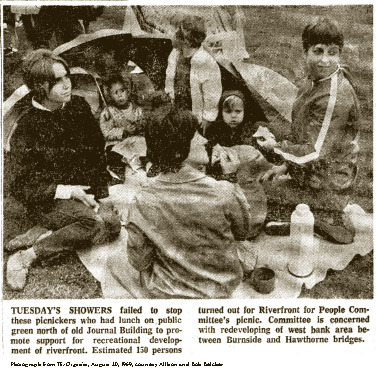
Here’s a photo from one of the picnics. From here.
The picnic was the first of a number of such demonstrations over the course of that summer. The protest was organized by Allison Belcher and her husband Bob. Allison said, “I was ironing clothes, as was the wont of females to do of that time and I heard on the radio that the Highway Commission was going to put this road right down through where the Oregon Journal property was along the river, so I called up Ira Keller [chairman of the Portland Development Commission—one of the city’s most powerful, mercurial figures] on the telephone and I said, ‘what are you doing, why are you doing this?’ He said, ‘You shouldn’t be bothered—you’re just a housewife.’” This quote and many of the other quotes from the RFP organizers come from an excellent interview conducted by Tim DuRoche, here).
Allison started making phone calls, reaching out to people she had met through a shared interest in the upcoming 1970 City Council election. In the meantime, her husband Bob got in touch with his architect coworkers- folks interested in the historical preservation of west-side waterfront buildings and folks with a vision for a more vibrant Portland than the east side riverfront’s maze of concrete represented.

This is an image from a 1932 planning report by Harland Bartholemew. Notice the riverfront green space on both sides of the river. During the war, the eastside riverfront would be lost to industrial uses and freeway I-5. Notice the “city beautiful” style buildings. City of Portland Archives.

This gif from this bikeportland article shows ODOT’s proposal to widen I-5 along the eastbank of the river even further, creating a ridiculous overhang over the eastbank multi-use path.
The picnic worked. The Riverfront for People organizers got the attention of Governor Tom McCall, who, even before the picnics, had spoken about his hope of creating a public greenspace along the waterfront. The alliance between the regular folks- the 350 people who showed up to have summer picnics on a highway median- and the political establishment built a powerful coalition able to resist the 1970’s hunger for more miles of concrete.
However, despite their new and powerful ally, Harbor Drive wouldn’t officially close until 1974. That’s five years of difficult political work to achieve their goal. This political work helped inspire a new generation of citizen leaders in Portland politics. Carl Abbott writes: “The process of neighborhood planning between 1957 and 1967 was as straightforward as its content. City Planning Commission reports make no reference to neighborhood groups or citizen involvement. They were prepared by city employees for their colleagues in city hall.”
However, as part of the Harbor Drive campaign, Belcher and others began showing up to city hall meetings, demanding to have their opinions considered in the decisions that shape their city. Belcher said, “It was something new for Portland to go down to City Hall and testify—everything had always been run by these people who’d been in power for a long time and they didn’t discuss it with anyone. There really hadn’t been much change or access up to that point.” PSU professor Ernie Bonner notes that 120 people attended the January 14th, 1970 meeting of the State Highway Commission, where a closure date for Harbor Drive was officially set.
Harbor Drive helped usher in a new era of citizen engagement in local issues. Allison and Bob Belcher protested alongside Vera Katz (namesake of the Eastside Riverfront Recreational path) and Gretchen and Steve Kafoury (Parents to commissioner Deborah, and longtime political officeholders themselves) to demand that the City Club of Portland allow women as members. Bob Belcher: “What began with Model Cities and then Neil Goldschmidt coming on to Council … was part of this something wonderful that was happening in Portland of that time. It was post-Kennedy—there was a huge energy in the air … there was a lot going on, all that turmoil in Vietnam, but there was an underlying current of all these things on a national level. …Our great virtue was the times energized us—it was a hopeful time. We were pretty outraged and we were young enough that we thought we could make a big noise about this.”
Their ‘young outrage,’ ability to build connections with establishment politicians like McCall, and savvy campaigns for councillors Anderson, McCready, and Goldschmidt would create the initial energy required to defeat the proposal for the Mt. Hood Freeway when it came up in 1975, and would then help to divert the funds necessary to create the first branch of the MAX light rail line in the metro region. Activists were also successful in defeating a plan to build a 12-story parking garage on the site that is now Pioneer Courthouse Square.

A picture from the early days of the Marquam Bridge. Photo here.

The west side of the city, with Harbor Drive. Look at all of that open space between the Standard Insurance Building on 5th and the riverfront! Photo Here.
In 1973, councilman Goldschmidt became Mayor Goldschmidt, and created the Office of Neighborhood Associations. This plan helped formalize a pathway for democratic engagement in city politics. However, the neighborhood associations could be an institution that’s beginning to show its age. In 2019, Commissioner Chloe Eudaly picked a fight with the neighborhood associations in Portland. Quoting from this article in the WW, she argues “Eudaly says neighborhood associations too often represent white homeowners and exclude renters, people of color and immigrants. And, she says, they serve as gatekeepers who stand in the way of denser development and the construction of more affordable housing.”
Eudaly proposed an ordinance that would help bring new voices and interest groups to official budget, land use, and development discussions; discussions currently limited to the formally-recognized and geographically-based neighborhood groups. The WW notes “currently, six identity-based groups—including the Urban League, the Latino Network, and the Immigrant & Refugee Community Organization—receive funding,” but are not currently invited to participate in those discussions. Eudaly’s ordinance hoped to change that.
2019’s Eudaly v. Neighborhood Association title fight portrayed the neighborhood associations as the white, home-owning, baby-boomer villains: a political vanguard keeping people with younger, fresher ideas out of the traditional channels of political access. These, of course, being the same villains who once organized to stop the expansion of two freeways, created a key downtown greenspace, forced the city to adopt a progressive view of transit planning, and helped establish systems for democratic engagement in city government.

The Portland west side waterfront today. Photo.
In his interview with the Belchers, DuRoche asked “if we were in danger of becoming complacent or resting too much on the laurels of past successes —and forgetting how to organize and coalesce around neighborhood, regional issues—I was greeted with a rousing, “Yes.”
“I would frame it this way,” Bob Belcher elaborates. “With this event of 40 years ago, this was kind of like our neighborhood—downtown. We lived in Irvington, but in a way, we worked downtown, we played down there, we just wanted it better. …These days we’re grappling with a regional project [the Columbia River Crossing] that has a misunderstood impact on this city and surrounding, adjacent neighborhoods and all kinds of ramifications that we can’t begin to understand. It’s ended up to be not just a simple neighborhood issue that a lot of us in the past could identify with and get rallied to, with an Allison Belcher haranguing us to get out and go to the picnic. It’s far more complex … how do we make the point these days?”
The Columbia River Crossing is no longer the Freeway Fight du jour: attention has now shifted to the I-5 freeway expansion through the Rose Quarter. It’s worth taking another look at Bob’s words above: are freeway projects today really more difficult to understand, ‘far more complex,’ and not just ‘simple neighborhood issues?’
In my last article, I wrote about the Seattle Labor Temple; at one point, a bustling center for labor activism; today, nearly empty. Less than a mile away, three glass domes built by Amazon serve as a new kind of temple to the American Worker. It’s clear from these features of the built environment that the nature of labor has changed. Perhaps labor activism needs to change as well. Considering Bob Belcher’s perspective, how have the fights against freeways changed? How does transportation activism need to change? How do the traditional methods of civic engagement need to change?
However, I think the other thing to consider is the effectiveness of Allison Belcher’s simple protest- a picnic in an unlikely place- and the spirit of activism it inspired in the Portland community. At the end of the day, said Belcher and fellow organizer Jim Howell, it was really about giving their kids a chance to get to the river. If we let the freeway take over the riverbank on both sides, they couldn’t have that chance. “It wasn’t political,” said Howell. “It was Civic.”
-----
I tend to get deep into research holes while writing these. This is part bibliography and part recommendations.
Carl Abbott’s book “Portland in Three Centuries.”
Carl Abbott’s book “Politics, Planning, and Growth in a Twentieth-Century City”
https://www.pdx.edu/usp/planpdxorg-riverfront-people
https://metroscape.imspdx.org/a-riverfront-park-runs-through-it?print=print
https://www.wweek.com/news/city/2019/09/11/chloe-eudalys-neighborhood-war-the-populist-commissioner-hits-back-against-critics-who-say-shes-strangling-portland-democracy/
https://www.portlandoregon.gov/archives/article/24741
http://rebelmetropolis.org/the-portland-riverfront-that-almost-was/
https://portlandtribune.com/but/239-news/463929-376278-learning-from-portlands-harbor-drive
https://www.cnu.org/what-we-do/build-great-places/harbor-drive
https://www.cnu.org/publicsquare/2019/04/12/chance-repeat-history
0 notes
Text
Exercises were never quite straight forward
"I don't think they've been close. I don't know how with Republican votes they are going to bridge that gap over there. I think it has been wishful thinking, and the President is overstating, or overestimating his leverage. Since then, we been putting a good bit of pressure on ourselves to make the league semis. We needed to win and we won three games on the road and we looking good for a semi final. Victories over Down, Donegal, and Mayo came over three consecutive weekends and there was a slight concern the gap week would slow Kerry down in their trip to Monaghan.Those fears were allayed by arguably Kerry best performance yet.As Walsh says: bit of a break, definitely we would have loved it had we another game the following weekend.
Cheap Jerseys free shipping Jimmy Hoffa dropped out of school in the 9th grade and began working when the stock market crashed. Born a natural leader, at the age of eighteen Jimmy Hoffa and his coworkers organized and negotiated a union contract while working for Kroger Grocery and Baking Company. Cheap Jerseys free shipping He quickly advanced his way to the top of the Teamsters union in the 50 While being active in the in local organized crime groups and the union, Hoffa was a devoted loving father to his two children. Cheap Jerseys free shipping
Cheap Jerseys free shipping Some are beloved, some are reviled. Here's a look back at the team's uniform history:The Sabres hit the ice in 1970 with their classic crossed swords and swashbuckling buffalo. The home jerseys were white with blue on the shoulders. Even if the guy in your life has never managed to catch a fly ball while sitting in the stands, he can still own an autographed baseball or an autographed football, tennis ball, boxing gloves, or similar items. Prices vary widely. https://www.wholesalejerseyslan.com/ That is one reason why it is smart to shop around, and have a variety of items in mind when you decide to shop online.. Cheap Jerseys free shipping
cheap nfl jerseys This is on behalf of the Hinton East Hockey Team, the club for whom, I, the undersigned, serve as the President. Our club was formed only four years ago and in this time we have established ourselves as force to reckon with after having competed in several hockey tournaments in and around the city. We have now been given the opportunity to play in the state level hockey tournament that is being organized by the North Carolina State University.. cheap nfl jerseys
wholesale nfl jerseys A special guy and I think the whole organization should be very, very excited about him. Will be allowed in starting Friday to watch the workouts. wholesale nfl jerseys Large crowds are expected given the euphoria that has gripped Alberta capital since McDavid name was called by the Oilers as the NHL top overall draft pick at last week draft.. wholesale nfl jerseys
wholesale jerseys from china When there is absolutely nothing you could do as to what is bothering youWholesale Jerseys, obsessing is merely going so it will be a whole lot worse. With all of the info you figured out from the article you are able to genuinely increase and develop, but the only way this will transpire is if you implement the details to the very best of what you can do. [:] [:] Affiliate Marketing A True Home Based Internet Business Corey Mccall Submitted 2014 01 24 00:02:14 Affiliate Marketing The Genuine Home Based Internet BusinessIf you're looking for a true home based internet business, then affiliate marketing might just be the ticket for you. wholesale jerseys from china
wholesale jerseys from china The of the Smyrnans and Ephesians salutes you. Remember our Church is in Syria, from which I am not worthy to receive my appellation, http://www.okcheapjerseys.com/ the last those of that place. Fare ye well in the Lord Jesus Christ, while ye subject to the bishop, and in like manner to the presbyters and the deacons. wholesale jerseys from china
wholesale nfl jerseys from china Wait for the online NBA 2k17 generator to fetch you a fresh unused code based on your location and your require. Social networks are already buzzing with looking for the data related to locker codes of NBA 2K17. Need to go the generator from above link and pick your console kind and the denomination of the free of charge NBA 2k vc code you need.. wholesale nfl jerseys from china
cheap jerseys Former Columbus play by play man Dan Kelly, I'm told, was a candidate. Former Thrashers studio host and radio play by play man Dan Kamal was interested. wholesale jerseys The most intriguing name that may have been available is longtime Carolina play by play man John Forslund. cheap jerseys
wholesale nfl jerseys The hole features a 175 yard carry over a large peninsula of water to a green that is angled away from the player. If you can hit it, a high draw is the ideal shot for landing the ball on the green. If not, then the best strategy is to take an extra club and power your tee ball over the hazard. wholesale nfl jerseys
nfl jerseys During our training, we were always under scrutiny, as we to discover, much later. Exercises were never quite straight forward. Our squad officer, a Capt. As a professional, https://www.cheapjerseys18.com/ though, Steel failed to shine, with the low point coming in 1955 when he was part of Great Britain's first ever Tour de France team and abandoned mid race. "He wasn't the Ian Steel we'd expected," says Robinson. "He hadn't been training in France since January like the rest of us, and he paid for that." Outside the Tour, Steel's Viking team were rivals to Robinson's Hercules squad, and Robinson backed by a majority of Hercules riders in what was a national team recollects that "he felt a bit left out." nfl jerseys.
0 notes
Text
LUCY AND ALADDIN’S LAMP
S3;E21 ~ February 1, 1971

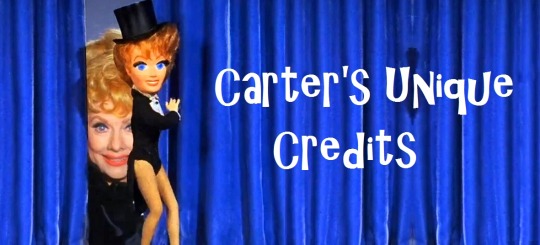
Directed by Charles Walters ~ Written by Frank Gill Jr. and Vin Bogert
Synopsis
When Lucy holds a garage sale, she discovers an old lamp. When wishes start to become reality Lucy believes the lamp may posses magic, until she loses it hiding it from Harry.
Regular Cast
Lucille Ball (Lucy Carter), Gale Gordon (Harrison Otis Carter), Lucie Arnaz (Kim Carter), Desi Arnaz Jr. (Craig Carter)
Guest Cast

Mary Jane Croft (Mary Jane) played Betty Ramsey during season six of “I Love Lucy.” She also played Cynthia Harcourt in “Lucy is Envious” (ILL S3;E23) and Evelyn Bigsby in “Return Home from Europe” (ILL S5;E26). She played Audrey Simmons on “The Lucy Show” but when Lucy Carmichael moved to California, she played Mary Jane Lewis, the actor’s married name and the same one she uses on all 31 of her episodes of “Here’s Lucy. Her final acting credit was playing Midge Bowser on “Lucy Calls the President” (1977). She died in 1999 at the age of 83.

George Niese (Mr. Frost) previously appeared in “Lucy Becomes a Father” (TLS S3;E9). This is his only episode of “Here’s Lucy.”

Robert Foulk (Janitor) played the policeman on the Brooklyn subway platform in “Lucy and the Loving Cup” (ILL S6;E12) and a Los Angeles Detective in “Lucy Goes To A Hollywood Premiere” (TLS S4;E20). This is the third of his six characters on “Here’s Lucy.”
This is Foulk's third episode in a row on the series.

William Lanteau (Mr. Minkle) first appeared with Lucille Ball in The Facts of Life (1960). In addition to an episode of “The Lucy Show,” Lanteau did four episodes of “Here’s Lucy.” He is best remembered for playing Charlie the Mailman in the play and the film On Golden Pond (1981).
Mr. Minkle is the superintendent of the office building where Harry and Lucy work.
The Telegram Delivery Boy is uncredited and has no lines.

Some reports say this episode was filmed on April 6, 1970, ten months before its initial air date. However, that is a Monday, and most all episodes were filmed on Thursday or Friday after four days rehearsal, so this is unlikely.
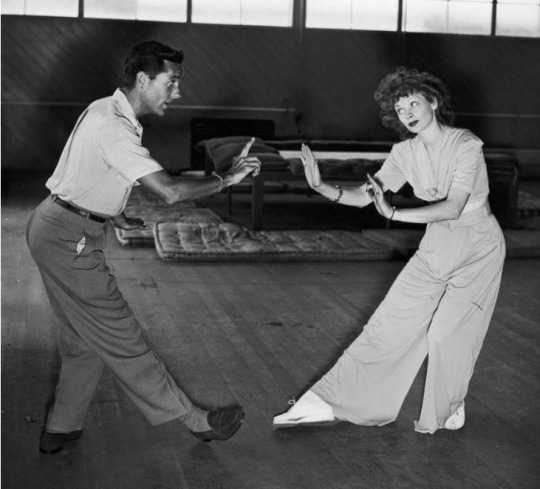
This is the second of only two episodes directed by 1954 Oscar-winner Charles Walters. The previous entry was “Lucy’s House Guest, Harry” (S3;E20). He went on to direct two of the Lucille Ball Specials: “What Now, Catherine Curtis?” (1976) and “Three for Two” (1975). From 1942 to 1945, Walters served as dance director on six films starring Lucille Ball. This episode is mentioned in the biography Charles Walters: The Director Who Made Hollywood Dance by Brent Phillips.
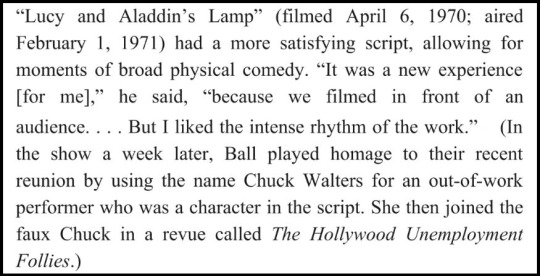
Likewise, this was the second and final episode written by 1955 Emmy-winner Vin Bogert. The first was “Lucy Stops a Marriage” (S3;E16), which he also co-wrote with Frank Gill Jr. It was a posthumous credit for Gill, who died six months earlier. It was the penultimate screenwriting credit for Bogert, who died in 1978.
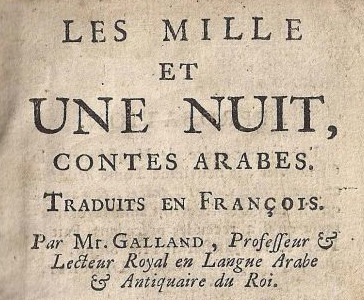
The title refers to the Middle Eastern folk tale of the boy Aladdin and a genie that comes from a lamp to grant him three wishes. It is one of the tales in The Book of One Thousand and One Nights ("The Arabian Nights"), and one of the best known - although it was not part of the original Arabic text, but was added in the 18th century by Frenchman Antoine Galland. The story has been the basis for many screen and stage re-tellings, including the current Disney musical Aladdin.
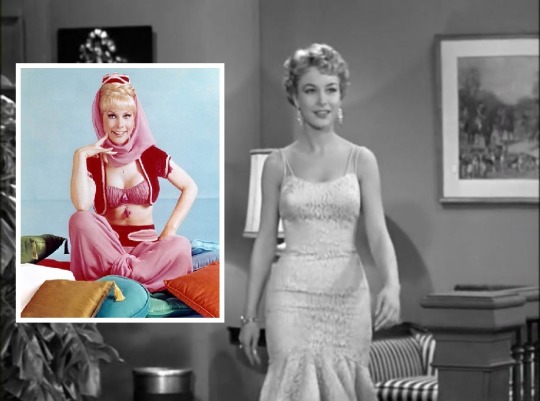
Another television sitcom was based on the legend of Aladdin: “I Dream of Jeannie” (1965-70), which had just ended its long run on NBC. It starred Barbara Eden as the genie named Jeannie, who lived in a bottle rather than a lamp. Barbara Eden made her TV debut on “I Love Lucy.” Hayden Rorke, who played the long-suffering Dr. Bellows on the series, also did an episode of “I Love Lucy” and recently appeared on “Here’s Lucy” as a Judge.

In the first scene, Craig is wearing a top hat with a flower in it. The other actors (Mary Jane Croft and George Niese) seem a bit taken aback by it.
MARY JANE: “Oh! I like your hat. (under her breath) Bless your heart.”
MR. FROST: (Points at the hat, surprised) “Oh! Oh ho ho ho.”
Perhaps it is something Desi Jr. saw in the props pulled for the scene and took a liking to? It also many have some sentimental significance to the actor, but for such a visual statement, it does not figure into the plot, which is unusual.

At the start of the episode, Kim is holding a heart-shaped throw cushion that may be a tribute to the opening credits of “I Love Lucy.”

Lucy gets a Western Union telegram from the (fictional) Murphy Soup Company to tell her she’s won a contest.

Lucy's prize-winning soup jingle is to the tune of “Jingle Bells,” a song that was heard many times on “I Love Lucy.”

Aside from Ann-Margret, Craig would wish for two tickets to the sold-our Rams Football game. After a dramatic thunder clap, Craig gets a call from his friend Alan who offers him a ticket. Craig says “How sweet it is!” Sex symbol and singing sensation Ann-Margret charmed Craig in a season 2 episode of “Here's Lucy.” The Los Angeles Rams would have been the Carters' hometown football team. “How sweet it is” was the catch phrase of actor / comedian Jackie Gleason (“The Honeymooners”), who made a cameo appearance in the second episode of the series.

Craig reads the October 1968 issue of McCall's with English actress Samantha Eggar on the cover. In “Ricky Has Labor Pains” (ILL S2;E14), pregnant Lucy Ricardo is reading the January 1953 McCall’s, which clearly has a cover that says “Why I Love Lucy” by Desi Arnaz.
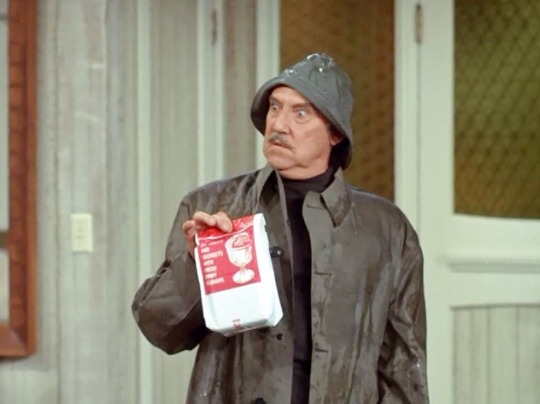
Kim wishes for Jamoca Almond Fudge Ice Cream, her favorite. After a dramatic thunder clap, Uncle Harry promptly arrives at the door to deliver it! Jamoca Almond Fudge is a signature flavor of Baskin-Robbins, who first marketed it in 1959. It is made by combining Jamoca coffee ice cream with roasted almonds and a chocolate ribbon. The bag Harry is holding, however, is not branded with their logo: pink and brown polka dots encircling a large number 31, the number of flavors they offer.

The second scene opens with Harry and Lucy coming to work with a happy Harry (dreaming of great wealth if he got access to the lamp) paraphrasing Robert Browning’s verse drama Pippa Passes (1841). The original goes:
The lark's on the wing;
The snail's on the thorn:
God's in his heaven -
All's right with the world! — from Act I: Morning
Harry’s version replaces mention of larks and snails with “The sun is shining; the birds are singing” and omits any reference to the Deity altogether.
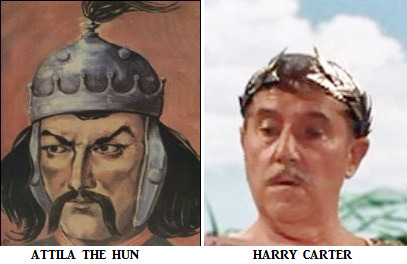
When Lucy won’t let Harry make any monetary wishes on her lamp, he storms off pouting and Lucy calls him Attila the Hun. Attila the Hun, was the ruler of the Huns from 434 until his death in March 453. During his reign, he was one of the most feared enemies of the Roman Empire.

Mary Jane tells Lucy that there's a sale on Italian knits at Morton's Department Store. Morton is Lucille Ball's married name since her marriage to Gary Morton (nee Goldaper) in 1961. Gary Morton is also a producer on “Here’s Lucy.” The fictional Morton’s Department Store joins Morton’s Service Station, Morton Pictures, and a number of other businesses named Morton on the series!

The janitor comes to empty the waste paper baskets idly singing “When Irish Eyes Are Smiling.” The song was written by Chauncey Olcott, George Graff Jr., and Ernest Ball in 1912. It was sung by William Frawley (Fred Mertz) in the 1936 film It's A Great Life! and was heard on “I Love Lucy” in “The Star Upstairs” (ILL S4;E25).
Harry says the Unique Employment Agency is located in office #1506. This implies that they are on the 15th floor.
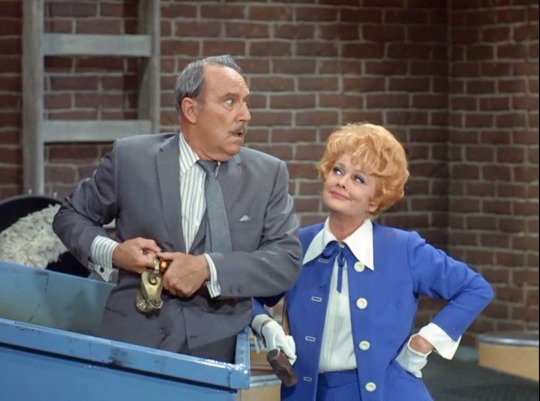
Finally finding the bottle in a dumpster, there is just one thing preventing Lucy from getting it back: a glass bottle! Preparing himself for Lucy to hit his finger with a hammer to get a bottle off it, he says “If John Wayne can do it, so can I.” John Wayne appeared with Lucille Ball as himself on “I Love Lucy” and “The Lucy Show.” Both episodes were titled “Lucy Meets John Wayne.”
At the end of the episode, Craig reveals that the lamp is just a novelty store item manufactured in Pittsburgh. A disappointed Lucy corrects him.

The Mexican border city was the location of “Lucy and Viv Visit Tijuana” (S2;E19) aired a year earlier.
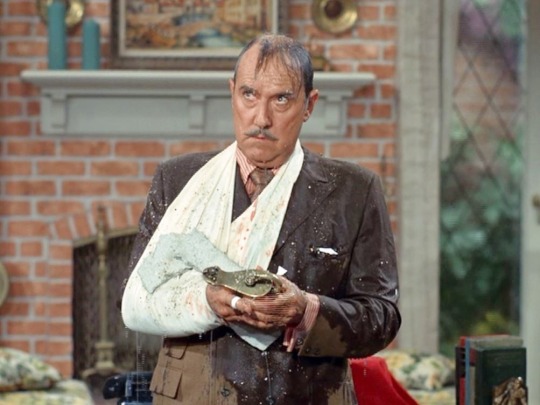
It wouldn’t be “Here’s Lucy” if Gale Gordon didn’t get wet!
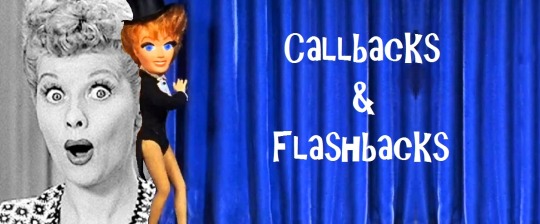
Garage Sale Treasures!

Hanging above the steamer trunk is Lucy Ricardo's iconic blue polka dot dress from “I Love Lucy.” It was designed by Elois Jensen and was seen in many episodes of the series.

Next to the blue dress is an art deco poster of Sarah Bernhardt by Alphonse Mucha (1897). The poster was previously seen in the dorm room in “Lucy, the Co-Ed” (S3;E6) and in the studio of the knife thrower in “Lucy, the Cement Worker” (S2;E10).

The zebra lamp with the red shade was on the tables of the Red Devil nightclub “Lucy and Ma Parker” (S3;E15, left). Unboxing items for the garage sale, Lucie finds her favorite doll, Clarabelle. Clarabelle made an appearance in “Lucy, the Part-Time Wife” (S3;14), although she now has on a new frock.
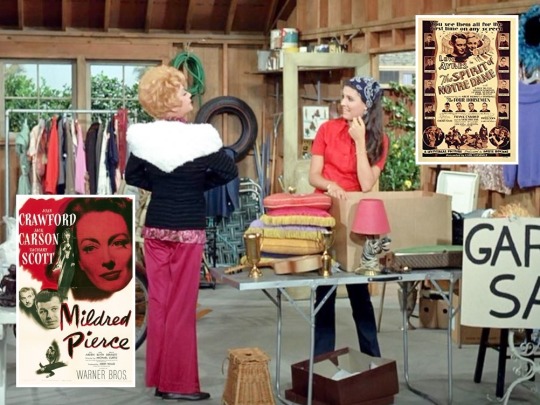
Lucy pulls out a fur-lined jacket she says was worn by Joan Crawford in Mildred Pierce. The 1945 film won Crawford an Academy Award. Joan Crawford guest starred on “The Lucy Show” in “Lucy and the Lost Star” (TLS S6;E22). Craig says that judging by the shoulder pads she could have worn it in The Spirit of Notre Dame. Craig is referring to a 1931 football-themed movie starring Lew Ayres.
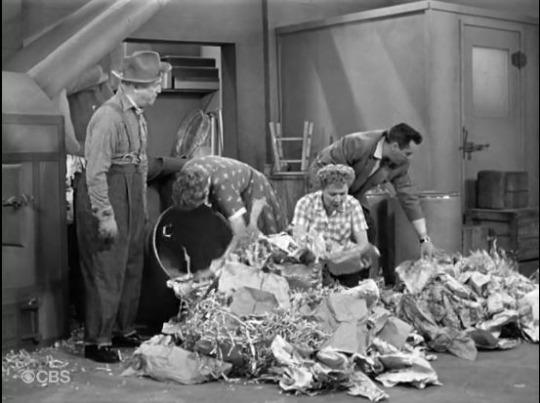
Search through the building’s trash for the lamp instantly brings to mind when the Ricardo’s and Mertz’s searched through the trash of 623 East 68th Street to find the pieces of Lucy’s torn-up roman a clef in “Lucy Writes a Novel” (ILL S3;E24).

Lucy and Harry were also up to their necks in trash in “Lucy the Process Server” (S1;E3) - this time in a department store basement - searching for an envelope of cash.

Leaky ceilings in need of plastering was also a plot point in two episodes of “The Lucy Show”: “Lucy and Viv Put in a Shower” (TLS ) and “A Loophole in the Lease” (TLS S2;E12). Both times the leaks were caused by overflowing tubs and showers, but here the cause is the continual rainfall.

Sound vibrations and not water was the cause of the ceiling collapse that ended “Breaking the Lease” (ILL S1;E18).
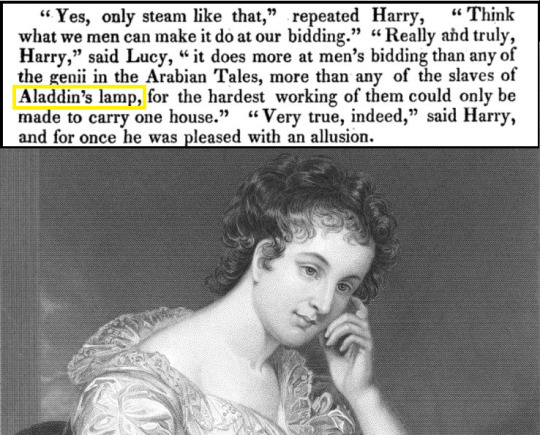
Flashing way back to 1813, prolific novelist Maria Edgeworth (1768-1849) penned a children’s book titled Harry and Lucy. In it, they marvel at the power of steam bursting through a kettle spout, comparing it to the magic of Aladdin’s Lamp. Not only did Edgeworth foresee the era of the steam-powered engine, she may have foretold “Here’s Lucy” as well!


Do You Live in a Barn? His arm in a sling, carrying an umbrella, and taking off his hat, Gale Gordon is unable to properly shut the front door, despite the fact it is pouring rain outside. Lucille Ball’s eyes dart over at it, doubtless wondering if she had time to close it without spoiling the take. She doesn’t - and it stays open for the rest of the scene.

Where the Floor Ends! When the hole in the ceiling breaks open, the camera is back too far and viewers can see where the carpet ends and the stage floor begins.
Sitcom Logic Alert! Only Lucy would find a miraculous lamp that grants wishes and hide it in a trash can in order to go on a shopping trip for discount sweaters!

“Lucy and Aladdin’s Lamp” rates 4 Paper Hearts out of 5
A fun episode that straddles the reality / fantasy line effectively. The Easter eggs in the garage sale scene are a treat for Lucy lovers!
#Here's Lucy#Lucille Ball#Gale Gordon#Lucie Arnaz#Desi Arnaz Jr.#Mary Jane Croft#Charles Walters#Vin Bogert#Frank GIll Jr.#George Niese#Robert Foulk#William Lanteau#Aladdin#Aladdin's Lamp#Garage Sale#Sarah Bernhardt#I Love Lucy#Mildred Pierce#Joan Crawford#McCalls#Ann-Margret#LA Rams#Jackie Gleason#Morton#John Wayne#CBS#TV#1971#The Spirit of Notre Dame#When Irish Eyes Are Smiling
5 notes
·
View notes
Text
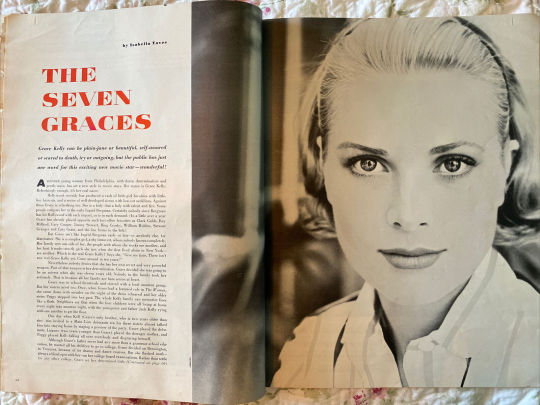
Clip from McCall's magazine, January 1955. "The Seven Graces".
From eBay.
8 notes
·
View notes
Text
Lucy Jarvis, Who Took TV Viewers Far and Wide, Dies at 102
Lucy Jarvis, a groundbreaking producer in television and theater who was especially known for gaining access to hard-to-crack locations, including the Soviet Union and China at the height of the Cold War, died on Jan. 26 in Manhattan. She was 102.
Scott McArthur, her longtime producing partner, announced the death.
In the late 1950s and early ’60s, when television’s top producing ranks included few if any other women, Ms. Jarvis helped bring about some remarkable programming, including gaining access to the Kremlin for a 1963 television special about that Moscow complex. In 1964 she took television viewers on an extensive tour of the Louvre in France, a documentary that won multiple Emmy Awards. In the early 1970s she got permission to film in China, bringing American viewers an inside look at ancient sites there at a time when that country was still largely sealed off.
Her work in theater was just as internationally adventurous. In 1988 she collaborated with Soviet producers to bring a production of “Sophisticated Ladies,” the Duke Ellington musical revue, to Moscow. In 1990 she brought the first Soviet rock opera ever seen in the United States, “Junon and Avos: The Hope,” to City Center in New York.
In a 1999 interview with The Daily News, she explained her longstanding interest in introducing one culture to another.
“If I can bring about an understanding of people whom we consider our enemy and know very little about,” she said, “I can justify the space I occupy on this very crowded planet.”
Lucile Howard was born on June 23, 1917, in Manhattan. Her father, Herman, was an engineer and a hotelier, and her mother, Sophie (Kirsch) Howard, designed clothing patterns for the Singer sewing machine company.
Ms. Jarvis credited her mother with instilling in her the poise and confidence that would later allow her to go head-to-head with formidable world leaders. Her mother, she said, made her study elocution, piano and dance and schooled her in how to enter a room with poise and greet people with confidence.
“She said, ‘I am giving you the tools so that you can walk into a room anywhere in the world and feel perfectly at ease,’” Ms. Jarvis said in an oral history recorded for the Television Foundation and New York Women in Film and Television in 2006. “She made me believe that there was nothing I couldn’t do if I wanted to. That was Self-Esteem 101.”
At Cornell University, where she earned a bachelor’s degree in 1938, she was involved in the drama club, but her major was nutrition. Her first job was as a dietitian at the Cornell Medical School.
A doctor there recommended her for the food editor’s job at McCall’s magazine, where she went to work in 1940. In that capacity she was encouraged to give talks around the country, and that led to invitations to appear on television in the very early days of that medium.
Even those primitive TV shows were reaching more people than the magazine did, or soon would be. “I thought, ‘I’m in the wrong place,’” she said in the oral history.
In 1940 Ms. Jarvis had married Serge Jarvis, a lawyer, and later in the decade, after earning a master’s degree at Columbia Teachers College in 1941 while working at McCall’s, she left the magazine to raise their two children.
In the 1950s she re-entered the work force, taking jobs at radio and television stations and then, in 1955, with the talk-show host David Susskind’s company, Talent Associates.
In 1957 she met Martha Rountree, the wife of one of her husband’s clients and a creator of the long-running radio and television series “Meet the Press.” They started a program for the WOR-Mutual Broadcasting System that year called “Capitol Close-Up,” which profiled powerful figures.
“Our first interview was with then-President Dwight D. Eisenhower at the White House,” Ms. Jarvis recalled in the oral history. “Our second interview was with the vice president, Richard Nixon, and our third interview, third show, was with J. Edgar Hoover, who had never before, or since, done a program.”
In 1959 she joined NBC as an associate producer (she later became producer) of a Saturday night debate program, “The Nation’s Future.” It featured two people on opposite sides of an issue, with Edwin Newman as moderator. One of her jobs was making sure the studio audience was evenly balanced between supporters of each position.
One particularly contentious episode was on American policy toward Cuba, where Fidel Castro had taken power in 1959, leading to increasingly hostile relations and an embargo.
“We had fistfights in the hallway,” Ms. Jarvis was quoted as saying in the 1997 book “Women Pioneers in Television,” by Cary O’Dell, “but the most difficult chore was finding enough pro-Castro people.”
Perhaps even more volatile was an episode on whether fluoride should be added to the water supply.
“That one almost got us all killed,” she said in the oral history.
One of her greatest coups came when she used persistence and well-placed connections, beginning in 1962, to get permission to film “The Kremlin,” an NBC special broadcast in May 1963 that gave American viewers an unprecedented view of that complex and its history.
“We went into areas denied Russian TV cameramen,” Ms. Jarvis, who is credited as associate producer on the program, told The Boston Globe. “About the time we were concluding our filming, the Cuban situation” — the Cuban missile crisis of October 1962 — “broke out. We finished rapidly and got out fast.”
For “A Golden Prison: The Louvre,” the French, concerned about the artworks therein, put almost as many obstacles in Ms. Jarvis’s path as the Soviets did for “The Kremlin.”
“They were afraid of lights,” she said in the oral history. “They were afraid of the reaction. And they were just very stuffy about it.”
It was a time when the producing ranks, at NBC and the other networks, were virtually all male.
“Most of the women who worked at NBC in those days,” Ms. Jarvis said, “when I came on as producer, were stenographers, gofers; on rare occasion they worked their way up to researcher.” She would hire women as associate producers when she could, she said.
Not all of her work was focused overseas. One particularly powerful NBC News special she produced, broadcast in 1965, was “Who Shall Live?,” an examination of the vast number of patients who needed kidney dialysis, the limited number of machines available to provide it and the punishing cost of the treatments.
“More than an examination of a medical problem,” The Globe wrote, “‘Who Shall Live?’ is a penetrating look at the frightening impasse reached when scientific advances have outdistanced the conventional laws of economics.”
In August 1972 Ms. Jarvis began filming in China for a documentary; she was “the first American since 1948 to be admitted to China to film news documentaries,” one news report said. The result, seen on NBC in January 1973, was “The Forbidden City.” Howard Thompson, reviewing it in The New York Times, called it “an uncommonly worthwhile hour of television viewing.”
In 1976 Ms. Jarvis left NBC and founded her own production company, Creative Projects; she later added a second company, Jarvis Theater and Film. Among her first TV projects with her new company was producing Barbara Walters’s first special for ABC; broadcast in December 1976, it featured interviews with the president-elect, Jimmy Carter, and his wife, Rosalynn, as well as with Barbra Streisand.
In addition to “Junon and Avos,” which Ms. Jarvis produced with the fashion designer Pierre Cardin, her later projects included a 1981 made-for-TV movie, “Family Reunion,” that starred Bette Davis.
Ms. Jarvis’s husband died in 1999. A daughter, Barbara Ann, died in 2001. She is survived by a son, Peter, and a granddaughter.
from WordPress https://mastcomm.com/lucy-jarvis-who-took-tv-viewers-far-and-wide-dies-at-102/
0 notes
Text
2021: Books
January
1. How to Raise an Elephant (2020) Alexander McCall Smith
2. Kopp Sisters on the March (2019) Amy Stewart
3. Dear Miss Kopp (2021) Amy Stewart
4. The Floating Admiral (1931) The Detection Club +
February
5. Send for Paul Temple (1938) Francis Durbridge
6. The Nonesuch (1962) Georgette Heyer +
7. Hangman's Holiday (1933) Dorothy L. Sayers ^
8. The Man in the Brown Suit (1924) Agatha Christie *
9. Romancing Mr Bridgerton (2002) Julia Quinn
10. Mrs. Pollifax Pursued (1995) Dorothy Gilman
March
11. The Knocker on Death's Door (1970) Ellis Peters +
12. The Viscount Who Loved Me (2000) Julia Quinn
13. An Offer from a Gentleman (2001) Julia Quinn
14. My Life in France (2006) Julia Child
15. The Girl Before (2017) J.P. Delaney
16. The Christie Curse (2013) Victoria Abbott
17. To Sir Phillip, With Love (2003) Julia Quinn
18. The Unfinished Clue (1933) Georgette Heyer +
April
19. The House of Green Turf (1969) Ellis Peters +
20. All Systems Red (2017) Martha Wells
21. The Duke and I (2000) Julia Quinn
22. The Woman in the Window (2018) A.J. Finn
23. An Elderly Lady is Up to No Good (Äldre dam med onda avsikter) (2018) Helene Tursten
May
24. Dial A for Aunties (2021) Jesse Q. Sutanto
25. When He Was Wicked (2004) Julia Quinn
26. The Secret Adversary (1922) Agatha Christie **
June
27. Partners in Crime (1929) Agatha Christie **
28. N or M? (1941) Agatha Christie **
29. By the Pricking of My Thumbs (1968) Agatha Christie **
30. Postern of Fate (1973) Agatha Christie **
31. The Chinese Parrot (1926) Earl Derr Biggers +
32. Mrs Pollifax and the Lion Killer (1996) Dorothy Gilman
33. Unshaken: Ruth (2001) Francine Rivers
34. The Bombay Prince (2021) Sujata Massey ^
35. Nightmare Alley (1946) William Lindsay Gresham
July
36. Every Last Fear (2021) Alex Finlay
37. The Other Black Girl (2021) Zakiya Dalila Harris
38. Survive the Night (2021) Riley Sager
39. The Man with the Golden Gun (1965) Ian Fleming
40. Bath Tangle (1955) Georgette Heyer +
41. The Obsession (2016) Nora Roberts
42. Teacher's Threat (2021) Diane Vallere
August
43. The Flight Attendant (2018) Chris Bohjalian
44. Dune (1965) Frank Herbert
45. Rainbow’s End (1978) Ellis Peters +^
September
46. For Your Own Good (2021) Samantha Downing
47. Unspoken: Bathsheba (2001) Francine Rivers
48. Miss Kopp Investigates (2021) Amy Stewart ^
49. Mrs. Pollifax, Innocent Tourist (1997) Dorothy Gilman
50. I Married Adventure (1940) Osa Johnson +
October
51. Legacy (2021) Nora Roberts
52. Your Guide to Not Getting Murdered in a Quaint English Village (2021) Maureen Johnson
53. The Man Who Died Twice (2021) Richard Osman ^
54. A Line to Kill (2021) Anthony Horowitz ^
November
55. Once Upon a Wardrobe (2021) Patti Callahan
56. The Joy and Light Bus Company (2021) Alexander McCall Smith ^
December
57. Unafraid: Mary (2001) Francine Rivers ^
58. The Big Book of Christmas Mysteries (2013) Otto Penzler (editor)
59. Portrait of a Murderer (1933) Anne Meredith
+ read what I already own challenge
^ finished/caught up in-series
* re-reads
** re-read series challenge (Tommy & Tuppence)
3 notes
·
View notes
Text
Elizabeth Taylor (novelist)
Elizabeth Taylor (née Coles; 3 July 1912 – 19 November 1975) was an English novelist and short-story writer. Kingsley Amis described her as "one of the best English novelists born in this century". Antonia Fraser called her "one of the most underrated writers of the 20th century", while Hilary Mantel said she was "deft, accomplished and somewhat underrated"
Elizabeth Taylor (novelist)
Novels
■At Mrs. Lippincote's (1945)
■Palladian (1946) shows most clearly the influence of Jane Austen.
■A View of the Harbour (1947)
■A Wreath of Roses (1949)
■A Game of Hide and Seek (1951)
■The Sleeping Beauty (1953)
■Angel (1957)
■In a Summer Season (1961) is her most sex-infused work, telling the story of a rich woman who marries a man ten years her junior.
■The Soul of Kindness (1964)
■The Wedding Group (1968)
■Mrs. Palfrey at the Claremont (1971). The actress Elizabeth Taylor is probably implied when it is announced that "the blousy Mrs Burton" is coming to stay at the hotel. It was included in Robert McCrum's 100 Best Novels In English. Shortlisted for the Booker Prize.
■Blaming (1976), posthumous.
Short story collections
■Hester Lilly (1954)
■The Blush and Other Stories (1958)
■A Dedicated Man and Other Stories (1965)
■The Devastating Boys (1972). Includes "Sisters" and "Flesh"
■Dangerous Calm (1995). A selection of her stories and two previously unpublished short stories
■Complete Short Stories (2012). Collects all of the works in the first five short story collections
■Elizabeth Taylor: A Centenary Celebration (2012). Short stories uncollected in "Complete Short Stories" including unpublished and incomplete stories, and essays and letters
■You'll Enjoy It When You Get There: The Stories of Elizabeth Taylor (2014). A selection of her stories.
Short stories
■"For Thine is the Power", Tribune, 31 March 1944
■"A Nice Little Actress", Modern Short Stories, August 1944
■"Better Not", The Adelphi, October–December 1944
■"A Sad Garden", Modern Reading, March 1945
■"It Makes a Change", The Adelphi, October–December 1945
■"Mothers", Here Today, 1945
■"Husbands and Wives", New Short Stories 1945–1946, ed. John Singer, 1946
■"Ever So Banal", Kite, Spring 1946
■"Simone", Writing Today, Summer 1946
■"The Light of Day", The Harpers Monthly, December 1947
■"Red-letter Day", The New Yorker, 27 November 1948
■"First Death of Her Life", The New Yorker, 19 March 1949
■"After hours of suffering", Vogue, July 1949
■"The Beginning of a Story", The New Yorker, 29 October 1949
■"Nods & Becks & Wreathed Smiles", The New Yorker, 19 November 1949
■"Gravement Endommage", he New Yorker, 7 October 1950
■"Plenty Good Fiesta", The New Yorker, 14 July 1951
■"Oasis of Gaiety", The New Yorker, 18 August 1951
■"The Idea of Age", The New Yorker, 9 February 1952
■"Spry Old Character", The New Yorker, 7 March 1953
■"Swan-Moving", The New Yorker, 26 December 1953
■"Goodbye, Goodbye", The New Yorker, 14 August 1954
■"Poor Girl", The Third Ghost Book, ed. Cynthia Asquith, 1955
■"Hare Park", The New Yorker, 14 April 1956
■"The Ambush", The New Yorker, 2 June 1956
■"The True Primitive", The New Yorker, 11 May 1957
■"The Rose, the Mauve, the White", The New Yorker, 22 June 1957
■"The Blush", The New Yorker, 17 August 1957
■"You'll Enjoy It When You Get There", The New Yorker, 23 November 1957
■"A Troubled State of Mind, The Cornhill Magazine, Spring 1958
■"The Letter-Writers", The New Yorker, 31 May 1958
■"Perhaps a Family Failing", The New Yorker, 5 July 1958
■"Summer Schools", The New Yorker, 6 September 1958
■"The Benefactress", The New Yorker, 5 December 1959
■"The Thames Spread Out", The New Yorker, 19 December 1959
■"A Dedicated Man", The New Yorker, 4 June 1960
■"The Prerogative of Love", The New Yorker, 23 July 1960
■"Girl Reading", The New Yorker, 29 July 1961
■"In a Different Light", The New Yorker, 29 July 1961
■"As If I Should Care", The New Yorker, 19 May 1962
■"Mice and Birds and Boy", The New Yorker, 9 February 1963
■"Mr Wharton", The New Yorker, 8 June 1963
■"The Voices", The New Yorker, 20 July 1963
■"In the Sun", The New Yorker, 18 April 1964
■"Vron and Willie", The New Yorker, 16 January 1965
■"Hôtel du Commerce", The Cornhill Magazine, Winter 1965/66
■"The Devastating Boys", McCall’s, May 1966
■"Tall Boy", The New Yorker, 31 December 1966
■"In and Out the Houses", The Saturday Evening Post, 14 December 1968
■"The Fly-Paper", The Cornhill Magazine, Spring 1969
■"Sisters", The New Yorker, 21 June 1969
■"Well, Here We Are", McCall’s, December 1969
■"The Blossoming", Saturday Book Story, 1972
■"The Wrong Order", Winters Tale 19, 1972
■"Madame Olga", McCall's, August 1973
Children's book
■Mossy Trotter (1967)
0 notes